Frank F. Weber's Blog, page 17
August 4, 2018
Words From an FBI Profiler, a 60’s Pierz School Walk Out and Introduction to The I-94 Murders
 Summary of
The I-94 Murders
A small-town Buckman girl looks for an online confidante. Her decision to meet this friend, in person, becomes the only connection investigators have, two years later, to the brutal execution of a young, up and coming businessman in Maple Grove. There is an obvious suspect in his murder. He had a tryst of bondage with his wealthy lover, Ava, that very evening. Ava craves attention and has a fiery attitude, so a lover’s quarrel is easily imaginable. But it doesn’t seem plausible that an Eden Prairie socialite, like Ava, would steal a gun from a home in Buckman to commit a murder. How is the online flirtation of a small-town teenager related to what becomes a series of murders?
Summary of
The I-94 Murders
A small-town Buckman girl looks for an online confidante. Her decision to meet this friend, in person, becomes the only connection investigators have, two years later, to the brutal execution of a young, up and coming businessman in Maple Grove. There is an obvious suspect in his murder. He had a tryst of bondage with his wealthy lover, Ava, that very evening. Ava craves attention and has a fiery attitude, so a lover’s quarrel is easily imaginable. But it doesn’t seem plausible that an Eden Prairie socialite, like Ava, would steal a gun from a home in Buckman to commit a murder. How is the online flirtation of a small-town teenager related to what becomes a series of murders?Jon Frederick returns in a search to uncover the identity of a killer who is creeping through communities along Interstate 94 in Minnesota, targeting couples who store photos of their intimate encounters online. The killer taunts Jon with hidden messages imbedded in local media that lead him to Sonia, a young woman with a terrible secret. The I-94 Murders is a fast-paced thriller based on the profile of a true-life serial murderer and the author’s interviews with a killer. The I-94 Murders guides the reader with an insider’s light along the dark road of a killer, countered by the resilience of individuals who are powered by love of family.
 Acceptable school wear in 1969.
Acceptable school wear in 1969.  Unacceptable school wear in 1969. In about 1969, Pierz students walked out of school over disagreeing with a dress code. Today, it seems so obvious the students were right, it’s hard to believe it was a controversy. At the time, girls were required to wear a dress to school. It was acceptable to wear a miniskirt to school, but unacceptable to wear slacks or jeans. When I look back on this issue I want to shout, as many of the students did back then, “for God’s sake people we live in Minnesota!” My older brother, Tony, was student council president, and had a long argument with Superintendent Quentin Doty over this. (I should point out here there were many more students involved who made strong arguments, but I simply don’t have their stories. Please feel free to share them in replies. I was very young and most students involved moved out of the area.) Ultimately, the superintendent and the school board refused to budge, but offered this “concession.” Girls could wear slacks on the bus to school, as long as they removed them and wore a dress when the school day started. The students, who were supported by many of the teachers (female teachers also had to wear dresses) walked out of school and refused to go to class until the rule was changed. It’s interesting to look back at news stories. The perspective from the media was more that the Pierz students were being civilly disobedient rather than the fact that they had a logical message. Some school board members threatened to resign if the rules changed. Ultimately, the students won. The rules were changed, and girls could put their pants on without fear of expulsion. Sometimes I look back at history and ask, “Why were people so stupid?” It also shows the importance of having a forward-looking schoolboard. Pierz has been blessed with great school board members the past few years and as a result has become one of the most progressive schools in the state.
Unacceptable school wear in 1969. In about 1969, Pierz students walked out of school over disagreeing with a dress code. Today, it seems so obvious the students were right, it’s hard to believe it was a controversy. At the time, girls were required to wear a dress to school. It was acceptable to wear a miniskirt to school, but unacceptable to wear slacks or jeans. When I look back on this issue I want to shout, as many of the students did back then, “for God’s sake people we live in Minnesota!” My older brother, Tony, was student council president, and had a long argument with Superintendent Quentin Doty over this. (I should point out here there were many more students involved who made strong arguments, but I simply don’t have their stories. Please feel free to share them in replies. I was very young and most students involved moved out of the area.) Ultimately, the superintendent and the school board refused to budge, but offered this “concession.” Girls could wear slacks on the bus to school, as long as they removed them and wore a dress when the school day started. The students, who were supported by many of the teachers (female teachers also had to wear dresses) walked out of school and refused to go to class until the rule was changed. It’s interesting to look back at news stories. The perspective from the media was more that the Pierz students were being civilly disobedient rather than the fact that they had a logical message. Some school board members threatened to resign if the rules changed. Ultimately, the students won. The rules were changed, and girls could put their pants on without fear of expulsion. Sometimes I look back at history and ask, “Why were people so stupid?” It also shows the importance of having a forward-looking schoolboard. Pierz has been blessed with great school board members the past few years and as a result has become one of the most progressive schools in the state.Through Sisters in Crime in Minneapolis I had the opportunity to listen and ask questions to FBI serial killer profiler Dan Craft. Dan has taught courses in Quantico and worked the Jeffrey Dahmer case, as well as many other high profile cases. Here are some of my notes:
“Threats don’t get confessions. Get a person to listen to you, agree with you on anything, and they are more likely to confess. I try to avoid having the person disagree. I never ask for a confession. I ask for the truth. If they’ve been interrogated before, I ask them first-- not to talk, just to listen to me. I start by talking about things that won’t get them in trouble, that may not even be related to the case, that they will agree with.”
Dan suggested all of us have 3 aspects to our life: Public, Private & Secret
He feels murder is motivated by aggression and sex.
You can tell what’s important to a person by looking at what they spend their time, money and energy on.
Look for behavior that goes beyond what was necessary to complete the crime.
What is missing from the scene is important (No forced entry. Nothing taken).
The most important question to address at a homicide scene is:
Why this victim? (How did they come in contact? Recreate the crime. Body disposal. Cause of death. Sexual assault? M.O. can change. Signature doesn’t change. Organized? Offender’s risk—when emotions high, reasoning is low.)
Signature is what they have to do to fulfill themselves. Posing is done to fulfill fantasy. Staging is done to throw off investigators.
Questions to consider:
What’s the degree of organization of the crime?
What is the degree of control? Physical presence, verbal threats, display of weapon, or physical abuse. The degree of force often gives you the motive.
What is the evidence of planning and premeditation? It takes 2 ½ times the weight of a person to hold a body down in water.
Any time you have a hand to throat strangulation there is a sexual component.
Why + How = Who
Look for the absence of the usual. The ultimate power trip is to decide the fate of another person. Quote from killer: “I had the power of God.”
People who are inhibited sexually develop unconventional forms of sexual expression. Some are harmless, some are harmful. Sex crimes are usually a sexual expression of aggression.
Jeffrey Dahmer started out with a fetish with mannequins and he searched for victims with a mannequin shape regardless of race. Dahmer was into necrophilia. From mannequins to robbing graves of young men to inviting gay men over and drugging them. The Green River Killer, Gary Ridgway, would sometimes return to bodies he discarded and be sexual with them (necrophilia). He claimed he did this in an effort to not kill another person. He pled guilty to killing 49 prostitutes.
Sanity is determined by--volition (choices), cognition (thinking), and intent (planning).
Phases of murderPre-murder. Previous 24 hours. Break up. Loss of job.Murder act. Selection and method (high risk victim—such as prostitute, or low risk victim such as mom).Disposal of the body (concealed or displayed, dressed or undressed). If the face is down or covered, it’s often an indication of remorse. Degrading position is evidence of no remorse.
Characteristics of serial killers and sexual sadists from the FBI statistics
1. Non-goal oriented fantasies—torture (a goal oriented fantasy would be to have a better job).
2. Excessive masturbation to the fantasy.
3. Pornography (hardcore—bondage, assaults, torture). Dahmer and Ted Bundy were into this.
4. Low self-esteem (their true side—not necessarily public side).
5. Low attachment (intensely lonely).
6. Abuse (some type of abuse in background—physical, sexual or emotional).
7. Absent, cold or unavailable father
The Triad (predictor of future violence from FBI stats)
1. Bed wetting at 12
2. Fire setting (occupied buildings)
3. Cruelty to animals (often resulting in death of animal)
Others—stalking, vandalism
The FBI doesn’t take over cases from other jurisdictions like they show on TV. The FBI does handle all serial killer cases even if they don’t cross state lines. Possibly 100 serial killers operating.
Cops have the highest rate of divorce, alcoholism and suicide of all legal occupations.
~~~~~~~~~~~~~~~~~~~
Do we have more accurate information on crimes today than we used to have?
In many ways, yes, with cameras and DNA, forensic advances, etc. But we also have greater ability to mislead people quickly. I feel it is easier for me to get accurate information on current cases and this is why my books (Murder Book and The I-94 Murders) are based recent true crime. I should point out, I change the names and move the cases to a new community so if you don’t remember the crimes happening there, it’s because they didn’t happen in that location. I do like to research and use real locations so people who have read my books can see where the scenes in the book took place when they go through the community. Even though it starts in Buckman (and may end there), much of The I-94 Murders takes place from St. Paul through Minneapolis and along communities north on Interstate 94. The final book in the trilogy, Last Call, which I am finishing now, takes place mostly in Brainerd and Detroit Lakes. The success of The I-94 Murders will help determine if there will be others.
Quotes:
“The farther north you go in Florida the deeper south you get.” Rural saying—unknown origin
Jim Gaffigan on parenting: “Bedtime makes you realize how completely incapable you are of being in charge of another human being. My children act like they’ve never been to sleep before. ‘Bed? What’s that? No, I’m not doing that.’ They never want to go to bed. To my children, bedtime is a punishment that violates their basic rights as human beings. Once the lights are out, you can expect at least an hour of inmates clanging their tin cups on the cell bars.”
“I don’t know what’s more exhausting about parenting: the getting up early or the acting like you know what you are doing. Kids cry about brushing their teeth, but at the same time can’t seem to feel food on their face.” Jim Gaffigan
Thanks for listening,
Frank
I never realized how political John Fogerty’s lyrics for CCR were, until I was older an looked back at them. Having spent last weekend visiting historic sites in Richmond, Virgina, I was reminded of this verse in Who’ll Stop the Rain?
I went down Virginia
Seekin' shelter from the storm
Caught up in the fable
I watched the tower grow
Five year plans and new deals
Wrapped in golden chains
And I wonder, still I wonder
Who'll stop the rain?
Published on August 04, 2018 00:00
July 31, 2018
3 Lynched, 1 Legally Executed in Little Falls, and Richard Zaun
The next blog will begin with an introduction to the I-94 Murders.
Frank Weber presenting to the National Association of Social Workers in St. Paul. 

 Samantha Benjamin completing a relaxation exercise with Social Workers.
Samantha Benjamin completing a relaxation exercise with Social Workers. 
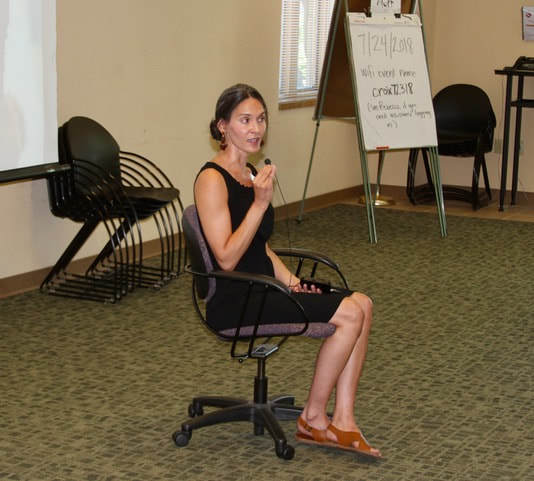 3 Lynched, 1 Legally Executed in Little Falls, and Richard Zaun
3 Lynched, 1 Legally Executed in Little Falls, and Richard Zaun
The first reported murder in Morrison County occurred in 1857. The three suspects, two of whom were Ojibwe and one of whom was Metis, supposedly murdered a German pack peddler by the name of Fritz. (Metis is someone who is part Indian and part European American. In the 1800’s there was a Metis nation along the Red River.) While they were being taken by Sheriff Pugh to St. Paul for prosecution, they were lynched by a group of men from Morrison County. The three men were taken to a tree near what is now the Little Falls Golf Course and hung. The lynching took place on August 17, 1857. In June 1901, the bones of the three lynched men (Charles Gigabish, Jo Shambo, James-- last name unknown) were dug up and given a proper burial. This interference with due process is a sad piece of Morrison County history.
The same year, the church was being constructed in Pierz, 1888, Franklin Eich from Buckman was murdered. On November 24, 1888 Franklin "Frank" Eich of Buckman, Minnesota, was found shot in the neck. Frank had been seen in his horse driven wagon with an unknown man, who took off with the horses and wagon after killing Eich.
The unknown man was Albert Bulow, who was caught in Verndale and confessed to killing Eich. During his March 1889 trial, Bulow pled guilty and was sentenced by Judge D. B. Searle to be hanged. Bulow was hanged at gallows constructed near the Morrison County Courthouse in Little Falls. On July 19, 1889, Albert Bulow became the only person in Morrison County to have been legally executed. Albert Bulow had a picture taken (below) while he waited for his execution.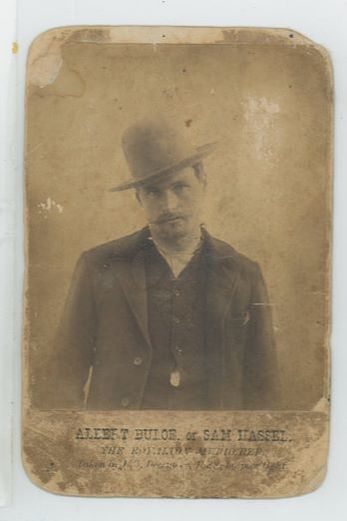 Another Morrison County murder occurred on July 6, 1921 when an intense argument ensued after a constable and a posse of citizens attempted to disrupt the production of moonshine. The victims (Eugene Lavoy killed, George Lavoy & Dave Lavoy wounded) and suspects (Leon Thompson and Homer Green) were involved in a moonshine-related "melee" with several other men ("a posse of citizens") and a constable (Otto Beckner). The posse and constable were attempting to arrest them. George Lavoy and Leon Thompson were charged with assault with dangerous weapons with intent to kill and later with resisting arrest.
Another Morrison County murder occurred on July 6, 1921 when an intense argument ensued after a constable and a posse of citizens attempted to disrupt the production of moonshine. The victims (Eugene Lavoy killed, George Lavoy & Dave Lavoy wounded) and suspects (Leon Thompson and Homer Green) were involved in a moonshine-related "melee" with several other men ("a posse of citizens") and a constable (Otto Beckner). The posse and constable were attempting to arrest them. George Lavoy and Leon Thompson were charged with assault with dangerous weapons with intent to kill and later with resisting arrest.
Homer Green, part of the posse, was charged with first degree murder for shooting Eugene Lavoy. However, a grand jury failed to indict Homer Green. George Lavoy and Leon Thompson were released on $1,000 bail each. Dave Levoy was charged with first degree assault on an officer for his part in the melee. Dave Lavoy was found guilty of third degree assault and fined $100.
Constable Otto Beckner was charged with nonfeasance in office for failing to fulfill his duties during the melee. Evidently Otto allowed the situation to escalate. Otto was released upon providing a $700 bond. Otto Bechner was ultimately indicted on six counts of charging malfeasance in office. The incident was described as “complicated.”
On April 10, 1970, Richard Zaun, librarian at Healy Senior High School in Pierz, was charged with first degree murder in the strangulation death of an 18-year-old student, Roger Arkuszewski.
Richard Zaun was described as socially awkward, and a little obsessive with keeping the library in order. Even though Roger Arkuszewski was the student, he is reported to have mercilessly picked on Zaun at school. (This by no means excuses Zaun’s behavior.) Roger had a tendency to find trouble in school and there were reports of his bullying students. Roger’s lack of regard for rules and Zaun’s being an awkward and rules-oriented librarian made the two a bad combination. Apparently pushed to the limit, Richard Zaun asked Roger to step in to a back room by the library, where he wrapped his tie around Roger’s neck and strangled him.
After killing Roger, Richard Zahn walked across the street and asked the local pharmacist Jim McGuire to go with him to talk to the priest. Jim took Richard to the parochial house (home of the Catholic priest in Pierz) and Richard confessed the murder. After Richard confessed, Jim McGuire prayed with Richard Zahn in St. Joseph’s Catholic Church in Pierz until the police arrived to arrest Zaun.
Richard Zaun pled guilty to first degree manslaughter and was sentenced to up to 15 years in Stillwater State Prison. After he was released from incarceration, Zaun was not arrested for any additional crimes.
Quotes:
You can’t have everything. Where would you put it? Stephen Wright
"My wife and I were happy for 20 years. Then we met." Rodney Dangerfield
If everything is going your way, you’re probably in the wrong lane. Stephen Wright
An officer came to my house and asked, “Where were you between 5 and 6?” I told him, “Kindergarten.”
Thanks for listening,
Frank Another summer party!






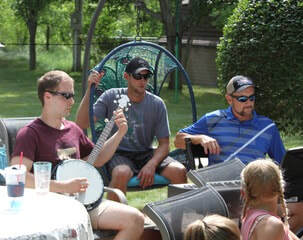

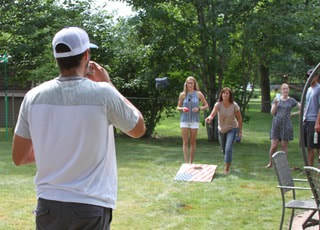

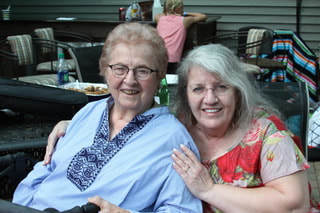
 John Tetrault's band Revolution 5 live at Milk and Honey Cidars in St Joseph.
John Tetrault's band Revolution 5 live at Milk and Honey Cidars in St Joseph. 
 Amateur baseball playoffs begin. In my opinion, this is the most entertaining baseball to watch in Minnesota.
Amateur baseball playoffs begin. In my opinion, this is the most entertaining baseball to watch in Minnesota. 





















 Samantha Benjamin completing a relaxation exercise with Social Workers.
Samantha Benjamin completing a relaxation exercise with Social Workers. 
 3 Lynched, 1 Legally Executed in Little Falls, and Richard Zaun
3 Lynched, 1 Legally Executed in Little Falls, and Richard ZaunThe first reported murder in Morrison County occurred in 1857. The three suspects, two of whom were Ojibwe and one of whom was Metis, supposedly murdered a German pack peddler by the name of Fritz. (Metis is someone who is part Indian and part European American. In the 1800’s there was a Metis nation along the Red River.) While they were being taken by Sheriff Pugh to St. Paul for prosecution, they were lynched by a group of men from Morrison County. The three men were taken to a tree near what is now the Little Falls Golf Course and hung. The lynching took place on August 17, 1857. In June 1901, the bones of the three lynched men (Charles Gigabish, Jo Shambo, James-- last name unknown) were dug up and given a proper burial. This interference with due process is a sad piece of Morrison County history.
The same year, the church was being constructed in Pierz, 1888, Franklin Eich from Buckman was murdered. On November 24, 1888 Franklin "Frank" Eich of Buckman, Minnesota, was found shot in the neck. Frank had been seen in his horse driven wagon with an unknown man, who took off with the horses and wagon after killing Eich.
The unknown man was Albert Bulow, who was caught in Verndale and confessed to killing Eich. During his March 1889 trial, Bulow pled guilty and was sentenced by Judge D. B. Searle to be hanged. Bulow was hanged at gallows constructed near the Morrison County Courthouse in Little Falls. On July 19, 1889, Albert Bulow became the only person in Morrison County to have been legally executed. Albert Bulow had a picture taken (below) while he waited for his execution.
 Another Morrison County murder occurred on July 6, 1921 when an intense argument ensued after a constable and a posse of citizens attempted to disrupt the production of moonshine. The victims (Eugene Lavoy killed, George Lavoy & Dave Lavoy wounded) and suspects (Leon Thompson and Homer Green) were involved in a moonshine-related "melee" with several other men ("a posse of citizens") and a constable (Otto Beckner). The posse and constable were attempting to arrest them. George Lavoy and Leon Thompson were charged with assault with dangerous weapons with intent to kill and later with resisting arrest.
Another Morrison County murder occurred on July 6, 1921 when an intense argument ensued after a constable and a posse of citizens attempted to disrupt the production of moonshine. The victims (Eugene Lavoy killed, George Lavoy & Dave Lavoy wounded) and suspects (Leon Thompson and Homer Green) were involved in a moonshine-related "melee" with several other men ("a posse of citizens") and a constable (Otto Beckner). The posse and constable were attempting to arrest them. George Lavoy and Leon Thompson were charged with assault with dangerous weapons with intent to kill and later with resisting arrest. Homer Green, part of the posse, was charged with first degree murder for shooting Eugene Lavoy. However, a grand jury failed to indict Homer Green. George Lavoy and Leon Thompson were released on $1,000 bail each. Dave Levoy was charged with first degree assault on an officer for his part in the melee. Dave Lavoy was found guilty of third degree assault and fined $100.
Constable Otto Beckner was charged with nonfeasance in office for failing to fulfill his duties during the melee. Evidently Otto allowed the situation to escalate. Otto was released upon providing a $700 bond. Otto Bechner was ultimately indicted on six counts of charging malfeasance in office. The incident was described as “complicated.”
On April 10, 1970, Richard Zaun, librarian at Healy Senior High School in Pierz, was charged with first degree murder in the strangulation death of an 18-year-old student, Roger Arkuszewski.
Richard Zaun was described as socially awkward, and a little obsessive with keeping the library in order. Even though Roger Arkuszewski was the student, he is reported to have mercilessly picked on Zaun at school. (This by no means excuses Zaun’s behavior.) Roger had a tendency to find trouble in school and there were reports of his bullying students. Roger’s lack of regard for rules and Zaun’s being an awkward and rules-oriented librarian made the two a bad combination. Apparently pushed to the limit, Richard Zaun asked Roger to step in to a back room by the library, where he wrapped his tie around Roger’s neck and strangled him.
After killing Roger, Richard Zahn walked across the street and asked the local pharmacist Jim McGuire to go with him to talk to the priest. Jim took Richard to the parochial house (home of the Catholic priest in Pierz) and Richard confessed the murder. After Richard confessed, Jim McGuire prayed with Richard Zahn in St. Joseph’s Catholic Church in Pierz until the police arrived to arrest Zaun.
Richard Zaun pled guilty to first degree manslaughter and was sentenced to up to 15 years in Stillwater State Prison. After he was released from incarceration, Zaun was not arrested for any additional crimes.
Quotes:
You can’t have everything. Where would you put it? Stephen Wright
"My wife and I were happy for 20 years. Then we met." Rodney Dangerfield
If everything is going your way, you’re probably in the wrong lane. Stephen Wright
An officer came to my house and asked, “Where were you between 5 and 6?” I told him, “Kindergarten.”
Thanks for listening,
Frank Another summer party!












 John Tetrault's band Revolution 5 live at Milk and Honey Cidars in St Joseph.
John Tetrault's band Revolution 5 live at Milk and Honey Cidars in St Joseph. 
 Amateur baseball playoffs begin. In my opinion, this is the most entertaining baseball to watch in Minnesota.
Amateur baseball playoffs begin. In my opinion, this is the most entertaining baseball to watch in Minnesota. 



















Published on July 31, 2018 00:00
July 19, 2018
Tarzan Sells Nuclear Sub to Cali Cartel

 Frank presented at Big Brothers Big Sisters in St. Cloud Pierz is getting the opportunity to partner with Big Brothers Big Sisters (BB/BS), an organization that offers services that bring children together with mentors. The goal is to have mentors willing to volunteer their time, from the community, to give some positive time to a child. Contact Rachel Johnson at Rjohnson@bbbscentralmn.org or call at (320) 258-4537 if interested. Jackie (Scholl) Johnson, a Pierz native and executive director of BB/BS for Central Minnesota, feels Pierz community mentors will step up to the plate. Whether to benefit a neighbor or to cheer a sports team, “Pierz shows up,” she said.
Frank presented at Big Brothers Big Sisters in St. Cloud Pierz is getting the opportunity to partner with Big Brothers Big Sisters (BB/BS), an organization that offers services that bring children together with mentors. The goal is to have mentors willing to volunteer their time, from the community, to give some positive time to a child. Contact Rachel Johnson at Rjohnson@bbbscentralmn.org or call at (320) 258-4537 if interested. Jackie (Scholl) Johnson, a Pierz native and executive director of BB/BS for Central Minnesota, feels Pierz community mentors will step up to the plate. Whether to benefit a neighbor or to cheer a sports team, “Pierz shows up,” she said.  Juan Ameida, Tony Yester, and Tarzan Fainberg Back in the mid-1990s, if you were a Miami mobster seeking guns, cocaine, the services of an arsonist, or muscle to beat down a deadbeat, Ludwig “Tarzan” Fainberg was your man.
Juan Ameida, Tony Yester, and Tarzan Fainberg Back in the mid-1990s, if you were a Miami mobster seeking guns, cocaine, the services of an arsonist, or muscle to beat down a deadbeat, Ludwig “Tarzan” Fainberg was your man.The dentist-turned-hood (practicing the former in the Soviet Union) routinely carried two pistols and operated out of his Hialeah, Florida strip club. He named the club Porky’s, after his favorite movie. He also owned the Russian restaurant Babushka, which was a magnet for snowbirding criminals from his homeland.
A bartender characterized Porky’s as “the kind of place where you could get killed.” Babushka was so notorious that FBI agents — who described Tarzan as “a maître d’ for criminals” — bugged the booths there. They were concerned that Tarzan and his arriviste colleagues in crime would merge with Cuban mobsters — who already used brutal, bloody force to rule Miami’s underworld — and create a sort of supergroup of criminality. The fear was well founded, considering what went down when Tarzan linked up with Cuban outlaws Juan Almeida and Nelson “Tony” Yester. Tarzan was introduced to Juan Almeida by Vanilla Ice. Vanilla Ice was a regular at Porky’s.
Tony, a highly regarded affiliate of multiple cocaine cartels, opened European markets for Colombian drug czar Pablo Escobar. The criminals’ opinions of one another were mixed. In describing Tarzan, Juan Almeida stated, “He struck me as an oddball.” Tarzan classifies Juan Almeida as a guy “who had two drinks and thought he was Tony Montana.” The hooker-loving Tony Yester’s first impression of Tarzan: “I said, ‘This guy is trouble.’ Thirty minutes later, I loved the trouble.”
“If they woke up and were hungry, they would fly a private jet to Cancun for lunch,” says Special Agent Tiller Russell, director of “Operation Odessa.” “Then they’d roll to Venezuela to check out a new casino. They went Maserati shopping by helicopter so they could look at the cars from the air. They had girls in every city.”
Juan Almeida was a specialist in obtaining black-market goods for status-crazed drug dealers. Almeida had jet engine put in a souped-up cigarette boat so it was uncatchable by the coast guard. He sold the boat for $2 million and it was used to transport cocaine. When Tony and Juan visited Moscow in the 1980’s they asked if they could rent a helicopter at the airport instead of driving to a city 90 miles east. They were told the airport had 40 helicopters sitting on the tarmac but nobody flies them because no one can afford the gas. They were told the cost of using them is prohibitive. When told the price was $500, they both laughed and rented 10 of them. When Tarzan asked the pilot how he was going to find the place, the pilot said they’d stop and ask directions. The pilot landed the helicopter in the middle of the city and asked a man for directions. Tarzan said they were approached by a police officer who had a whistle, but no weapon. They told the cop they were from Moscow, and he let them go. Tarzan, Juan Almeida and Tony Yester ultimately bought 32 Kamov military helicopters (with two rotors that were capable of transporting 5,000 kilos of cocaine via hook). They made other multimillion-dollar deals for Colombian cocaine barons, selling motorcycles and boats. During one of the deals Tarzan was laid on the tarmac at gunpoint by the Russian mob. Tarzan told them they couldn’t kill him as he was friends with Pablo Escobar. They told him to have Escobar come and save him. Tarzan talked Juan Almeida into flying a jet into Moscow as Pablo Escobar. Juan yelled at everyone, as Escobar would have, when he arrived, and they ultimately left with the motorcycles. Most of the goods came from sources in the freshly fallen Soviet Union, a place where everything seemed to be up for grabs at ridiculously low prices.
I remember reading how Juan and Tarzan were arrested trying to sell a Russian nuclear submarine to the Columbian Cali drug cartel in 1996. It sounded so crazy. I later realized they were close to pulling it off. Tony Yester arranged the deal.
Tarzan actually visited a secret military base in Russia and boarded the sub. Tony told him the cartel needed pictures of it. The Russian officer said that’s not possible. Tarzan offered him $200 (at the time officers were paid $30 a week), and he was allowed to take multiple pictures of the sub. Tarzan even had pictures standing next to the officer in front of the submarine.
So in 1996, Tony and Tarzan brokered a deal with the Columbian Cali drug cartel to buy a Russian nuclear submarine for $35 million. It was a Foxtrot-class submarine, or Project 641 as the Soviets called it. Nearly 300 feet long with 10 torpedo tubes (empty in this case). It was diesel but could be converted to electric for silent running.
The cartel felt they could transport $40 million worth of cocaine every trip. Tarzan was quoted as saying, “The cartel guys were nice guys. I didn’t ask them what they needed a submarine for.” Tony remembered laughing when Tarzan asked, "Do you want a sub with missiles or without?" Tony told him "Without. You’re going to land me on death row." With little oversight in Russia, military leaders acted as if they were independent of the government. An officer who let Tarzan on to the military base was going to sell the sub to him. A special agent revealed, “As far as the officer was concerned, he owned the military base. He might have sold them the submarine, taken the money and walked away with the money.”
But the deal never happened. Between an undercover agent, a tap on Tarzan’s cellphone and the wiring of Babushka, federal law enforcement agencies had enough information to shut down the sale. In January 1997, after he dropped his daughter off at school, Tarzan was arrested and hit with a 30-count federal indictment. Almeida, back in Moscow, trying to work out yet another deal and not realizing that this one had already soured, managed to temporarily elude arrest. Tarzan told the special agent who arrested him, “Why do you have to be special? I’m not special Tarzan. I’m just Tarzan.”
Tony Yester decided to rip off his partners and take off for Amsterdam with the first $10 million down payment for the submarine. As Yester laid low with the cash, cartel liaisons in the United States, aware that they had been burned, pressured Almeida to show them where Yester’s relatives lived in and around Miami. The message was that the cocaine traffickers would kill Yester’s family members. But Yester was too in love with his eight-figure haul to really care — and there was ultimately no retribution against his family. Tony Yester was quoted as saying, “10 million dollars really feels like 10 million dollars. It’s a lot of paper. Thank you, Cali cartel. This looks great.”
Greed got the better of him. Even though Yester may have suspected that the cartel was after him, he couldn’t help but try to get his hands on the remaining $25 million. He called his cartel contacts and arranged to meet them in the pickup area of the Madrid train station. While out of sight, he phoned his guy and lied about being in a particular taxi cab. Upon seeing 10 thugs rush the vehicle and hijack it with the unsuspecting passenger in back, Yester realized that the remaining cash would not be forthcoming.
Tony Yester escaped with his life and went on the run, aiming to avoid the cartel, Interpol and US law enforcers. Tarzan managed to get light punishment for his 1997 conviction; he rolled over on Juan Almeida and spent 30 months behind bars before being deported to Israel, where his family had immigrated, in 1999. Thanks to a successful appeal, Almeida served only 18 months for his part in the submarine caper. Years later, Tarzan again found himself behind bars, this time in Panama. “I never got a straight answer [about why he was in jail there],” says Special Agent Russell. “It was coke or pimping or messing with the wrong people.” Tarzan was released from the Panamanian prison in around 2016 and has since built a side career out of playing tough guys in gangster flicks shot in Russia. He now lives in Moscow.
In January 2017, Juan Almeida got federally charged by the Drug Enforcement Administration with conspiracy to possess narcotics with intent to distribute. He was recently sentenced to serve six years in federal prison.
Tony Yester was finally arrested in 2017 in Rome on charges unrelated to the submarine while en route to a wedding. He is currently being held in Italy. Of the $10 million, he said, “I cannot believe it how fast I spent it.”
As for Yester taking off with the cartel money, Tarzan says he would have done the same himself if he could have and expresses no hard feelings. “One scammer stole from another scammer; of course I accept it. Tony is my friend, and we’ll always love each other. Next time, I will steal it back from him.”
Quotes (Stephen Wright)
"I went to a tourist information booth and said 'Tell me about some people who were here last year.'"
"Why is it a penny for your thoughts, when you have to put your two cents in? Somebody’s making a penny."
"I called the wrong number today. I said 'Hello, is Joey there?'
A woman answered and she said 'Yes he is.'
I said ‘Can I speak to him please?’
She said ‘No, he can’t talk right now, he’s only two months old.'
I said 'Alright, I’ll wait.'"
“I’ve written several children’s books. But not on purpose.”
Thanks for listening,
Frank This is one of those songs that just has a nice sound. Plus, I have an affinity for garage bands, having been there myself.
 Frank and Rosetta enjoying a nice summer night of music Pierz Freedom Fest 2018
Frank and Rosetta enjoying a nice summer night of music Pierz Freedom Fest 2018  Brother’s Tone and the Big Groove (Preston’s Band)
Brother’s Tone and the Big Groove (Preston’s Band) 






 Lonestar
Lonestar  The Fabulous Armadillos
The Fabulous Armadillos
Published on July 19, 2018 14:41
July 13, 2018
A Killer Without A Conscience


 Frank speaking at The Crossings in League City, Texas on July 5. Joel David Rifkin was born on January 20, 1959. In 1994, he was sentenced to 203 years in prison for the murders of 9 women between 1989-93. He is believed to have killed up to 17 victims between 1989-93 in New York City and in Long Island, New York. Although he often hired sex workers in Brooklyn and Manhattan, he lived in East Meadow, a suburban town on Long Island.
Frank speaking at The Crossings in League City, Texas on July 5. Joel David Rifkin was born on January 20, 1959. In 1994, he was sentenced to 203 years in prison for the murders of 9 women between 1989-93. He is believed to have killed up to 17 victims between 1989-93 in New York City and in Long Island, New York. Although he often hired sex workers in Brooklyn and Manhattan, he lived in East Meadow, a suburban town on Long Island. 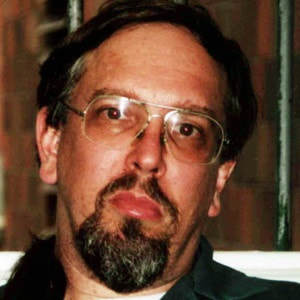 Joel Rifkin The Beginning
Joel Rifkin The BeginningJoel Rifkin's birth mother was a 20-year-old college student, and his biological father was a 24-year-old college student and Army veteran. It is significant to note that Rifkin had no information on his biological parents until after his arrest. At three weeks old he was adopted by an upper-middle class Long Island couple, on February 14, 1959. His adoptive father, Benjamin Rifkin, was of Russian Jewish descent and his adoptive mother, Jeanne (Granelles), of Spanish descent, converted to Judaism when she married. Benjamin Rifkin committed suicide in 1987.
Rifkin performed poorly in school due to learning disabilities and was unpopular with classmates due to his poor social skills. He graduated from East Meadow High School in 1977, then attended Nassau Community College, State University of New York, Brockport and State University of New York, Farmingdale, but left before earning a degree. After leaving college he found work as a landscaper.
The Murders
Joel Rifkin estimated soliciting about 300 prostitutes. Rifkin admitted watching the strangulation scene in Hitchcock’s Frenzy movie hundreds of times. He took advice for his murders from a book written on the Green River Killer. He committed his first murder on March 4, 1989, killing Heidi Balch in his home in East Meadow. Joel later stated that he killed Heidi with the theory that if he killed a prostitute, maybe he would stop soliciting them. Joel beat her death. During the fight for her life, Heidi bit his right hand hard, causing an injury. He put her in a choke hold and killed her. Joel then dismembered her body, removing her teeth and fingertips. He placed her head in a paint can and left the paint can in the woods of a golf course in southern New Jersey and her legs farther north. He then dumped her remaining torso and arms into the East River around New York City. Balch's remains were unidentified until 2013. Rifkin was only implicated in this killing after he was arrested for 16 additional murders.
Lorraine Orvieto, his 7th victim, was found in an oil barrel. Her driver’s license was found in Rifkin’s home when he was arrested. Lorraine's close friend and cousin stated, “A pathetic piece of shit like him, (Rifkin) can just come along and do with him what he will—(tears). I’m sorry I’m getting a little rage.”
Mary Katherine Williams' (his 13th victim) exact cause of death wasn’t known until a prison interview years later. Mary was a college graduate. Rifkin admitted strangling her until she passed out, assaulting her and then killing her. Her credit cards were found in Rifkin’s home.
Joel Rifkin believed his birth mother was a prostitute. It was later theorized that Rifkin killed prostitutes because he believed his mother was a prostitute. When interviewed, he said, “I killed prostitutes because they had no one. They had no lasting relationships. No family who cared. No one would ever come looking for them.” (This is simply not true.) Over the next 4 years, he killed 16 more women. Joel Rifkin also pointed out that prostitutes go places with men who don’t have to reveal their name to places they are unfamiliar with, making them easy targets. Basically, Rifkin didn’t care about anyone other than himself, and destitute women were easy targets.
Joel Rifkin kept Tiffany Bresciani’s body in his mother’s garage for several days before he decided to deposit her. Police finally caught up to Rifkin on June 28, 1993, when state troopers spotted him driving his Mazda pickup truck without a license plate lamp on the Southern State Parkway. Rifkin tried to find water to drive the truck into. The high-speed chase ended in Mineola, New York, when he crashed into a utility pole directly in front of the courthouse where he eventually stood trial. Troopers detected a foul odor from the back of the truck. It came from the corpse of his final victim: sex worker and dancer Tiffany Bresciani. Rifkin had picked Bresciani up in his pickup truck on June 24, 1993, where she was working on Allen Street in Manhattan, New York City. When police asked him if he killed any others, he said, “16 or 17 more.” Investigators stated Rifkin wanted people to know he was a prolific killer.
Joel Rifkin lacked remorse, and actually fell asleep during the prosecutor’s opening statement. Rifkin was found guilty of 9 counts of second-degree murder in 1994 and sentenced to 203 years to life in prison. His first possible parole date is February 26, 2197.
Prison
In early 1994 it was reported that Rifkin had engaged in a jailhouse scuffle with mass murderer Colin Ferguson. The brawl began when Ferguson asked Rifkin to be quiet while Ferguson was using a prison phone. The New York Daily News reported the fight escalated after Ferguson told Rifkin, "I killed 6 devils and you only killed women," to which Rifkin responded, "Yeah, but I had more victims." Ferguson then punched Rifkin.
Prison officials decided in 1996 that Rifkin was so notorious that his presence in the general prison population could be disruptive. He was confined to his cell at the Attica Correctional Facility for 23 hours a day. He spent more than 4 years in solitary confinement before being transferred to the Clinton Correctional Facility in Clinton County.
Rifkin sued, arguing that his solitary imprisonment was unconstitutional. In 2000, a state appellate court determined that prison officials had not violated Rifkin's constitutional rights by housing him in isolation. His lawsuit sought $50,000 for each of his 1,540 days in solitary confinement (totaling $77 million). Had he received any money, it would have been subject to state laws that earmark most of the award for the families of his victims. Corrections officials say that Rifkin is now imprisoned with more than 200 other inmates at Clinton who are not allowed into the general prison population.
August 1987: At, 28, Rifkin was arrested in Hempstead for soliciting sex from an undercover policewoman. Planning for the killing spree started shortly after.
Victims
Heidi "Susie" Balch, 25: Identity of remains found in 1989 were unknown until April 2013. According to Rifkin, in 1989 he picked up a woman referred to as “Susie” who was a drug addict, had sex with her, but she kept requesting more drugs. Rifkin grew angry and repeatedly hit her over the head with a howitzer shell. He finally killed her by strangulation. On 3-05-1989, at 30, Susie’s head was found by an individual playing golf.
 Heidi "Susie" Balch Julie Blackbird: In 1990, at age 31, Rifkin picked up Julie Blackbird and had sex with her, later he hit her on the head with a table leg, left her in the basement, and the next day bought cement and a knife and dismembered her body and placed it in the cement, then he dropped it into different parts of the Hudson River. Her remains were never found.
Heidi "Susie" Balch Julie Blackbird: In 1990, at age 31, Rifkin picked up Julie Blackbird and had sex with her, later he hit her on the head with a table leg, left her in the basement, and the next day bought cement and a knife and dismembered her body and placed it in the cement, then he dropped it into different parts of the Hudson River. Her remains were never found.Barbara Jacobs, 31: On 7-13-1991, Rifkin brought home Barbara Jacobs for sex. When she fell asleep, he clubbed her with the same table leg used on Julie Blackbird, he then disposed of her body in the Hudson River. Barbara fought back. She was found hours later, but her death was blamed on a drug overdose.
Mary Ellen DeLuca, 22: On 9-01-1991, Mary Ellen Deluca was picked up by Rifkin, rushed through sex with him and he claims he asked her if she wanted to die and she said yes, so he strangled her to death. She never fought back. He left her body at a rest stop outside Cornwall. She was found on 10-01-1991.
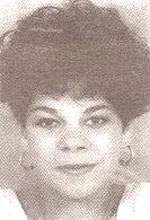 Mary Ellen DeLuca Yun Lee, 31: In September of 1991, Rifkin picked up Yun Lee, a prostitute he had been with before. He failed to perform and struck her on impulse, strangling her to death. She was dropped into the East River. Found on September 23rd.
Mary Ellen DeLuca Yun Lee, 31: In September of 1991, Rifkin picked up Yun Lee, a prostitute he had been with before. He failed to perform and struck her on impulse, strangling her to death. She was dropped into the East River. Found on September 23rd."Number 6", Never identified: According to Rifkin, in July 1992 he murdered unidentified victim #1. They call her the “Jane Doe” victim. Again, Rifkin picked up her along the side of the road, slept with her, and then strangled her around the neck. Her body was placed in an oil drum and dumped into Netown Creek. Her remains were never recovered.
Lorraine Orvieto, 28: On 12-26-1991 Lorraine Orvieto (HF, 28) was strangled by Rifkin. Her body was placed in an oil drum and thrown into Coney Island Creek to hide the evidence. Her body was recovered 6 months later.
 Lorraine Orvieto Mary Ann Holloman, 39: On 1-02-1992 32 Rifkin found Mary-Ann Holloman (WF, 39) walking along the street late one night and picked her up. He then strangled her and placed her body in an oil drum. In July 1992 Holloman’s body found in Coney Island Creek, the same location as Lorraine Orvieto. Her body was recovered 2 days before Orvieto’s.
Lorraine Orvieto Mary Ann Holloman, 39: On 1-02-1992 32 Rifkin found Mary-Ann Holloman (WF, 39) walking along the street late one night and picked her up. He then strangled her and placed her body in an oil drum. In July 1992 Holloman’s body found in Coney Island Creek, the same location as Lorraine Orvieto. Her body was recovered 2 days before Orvieto’s."Number 9", Identity remains anonymous: July 1992 No-Name #1, they call her the “Jane Doe” victim.” Again, Rifkin picked up her along the side of the road, slept with her, and then strangled her around the neck. Her body was placed in an oil drum and dumped into Newtown Creek.
1992 No-Name #2 was picked up by Rifkin. He had sex with her, and then strangled her. He placed her body in an oil drum and dumped it into the Harlem River.
Iris Sanchez, 25: In April 1992 Rifkin met Iris Sanchez, whom he reported was a crack addict and prostitute. Strangled her during sex. Covered her body with an old mattress and dropped her fully clothed body in a field near JFK International.
Anna Lopez, 33: On 5-25-1992 Rifkin met Anna Lopez, a cocaine addict and prostitute. Picked her up, paid her for sex and then strangled her. Dropped her body off in the woods in Putnam County off I84 in Brewster.
Violet O'Neill, 21: In 1992 Rifkin met prostitute Violet O’Neill. He took her to his mother’s house, strangled her, and dismembered her in the bathtub. Threw her remains in the waters surrounding Manhattan. Torso was later recovered in the Hudson River.
Mary Catherine Williams, 31: On 10-02-1992 Rifkin picked up Mary Catherine Williams, whom he had previously dated. Smothered her in the car after trying to strangle her while passed out.
Jenny Soto, 23: On 11-16-1992, Rifkin killed Jenny Soto. Traces of cocaine were found in her body. She fought for life by kicking and scratching so hard that she broke all 10 fingernails clawing at him. She had taken a long time to die, so Joel had to snap her neck. Police think she was killed at about 2 a.m. He dropped the body over a rocky cliff, landing at the edge of Harlem River at the foot of Lincoln Ave. Discovered at 8:00 am wearing only a red and orange striped shirt. Her large gold shell earrings and wallet full of pictures of her boyfriend were missing. Her panties and drug syringe were found in Joel’s room after he was arrested. Two days after the body was identified, the police resigned the case. Astonished by Jenny’s fight for life, Joel took a break for 15 weeks before killing his next victim.
 Jenny Soto Leah Evans, 28: On 2-27-1993, Rifkin killed Leah Evans, who had two children and was out working the streets for drugs. She had dark brown hair and was 95lbs and 4’9. Joel offered her $40 for sex, and when it was over, he strangled her. Dug a shallow grave in Hidden Hill Farm in Northampton. Joel had taken her driver’s license and employee ID card.
Jenny Soto Leah Evans, 28: On 2-27-1993, Rifkin killed Leah Evans, who had two children and was out working the streets for drugs. She had dark brown hair and was 95lbs and 4’9. Joel offered her $40 for sex, and when it was over, he strangled her. Dug a shallow grave in Hidden Hill Farm in Northampton. Joel had taken her driver’s license and employee ID card.Lauren Marquez, 30: On 4-02-1993, Rifkin killed Lauren Marquez, who was a tall, thin 28 year old from Tennessee. He admitted that he does not remember taking a souvenir. Immediately after starting sex he grabbed her neck and strangled her. After she died, he deposited her body in the Suffolk County Pine Barrens.
Tiffany Bresciani, 22: Body found in bed of Rifkin's pickup truck. On 6-24-1993 Rifkin killed Tiffany Brescani, who was a heroin addict from Louisiana. She was his second prostitute of the night, and he drove her to a parking lot and strangled her at 5:30 a.m. After he killed her, he headed home and stopped along the way to buy rope and tarp of which he wrapped her in and put her in the truck of his mother’s car.
Tiffany Bresciani was the girlfriend of Dave Rubinstein, singer and co-founder of the New York-based hardcore punk band Reagan Youth. David Rubinstein committed suicide 1 week after the discovery of Tiffany's death.
 Tiffany Bresciani Rifkin is also suspected to be responsible for some victims whose remains were found in March and April of 2011, previously attributed to the Gilgo Beach Killer. In an April 2011 prison interview with Newsday, Rifkin denied having anything to do with the remains discovered in 2011. Experts and victims' rights advocates, however, believe that those denials have no value.
Tiffany Bresciani Rifkin is also suspected to be responsible for some victims whose remains were found in March and April of 2011, previously attributed to the Gilgo Beach Killer. In an April 2011 prison interview with Newsday, Rifkin denied having anything to do with the remains discovered in 2011. Experts and victims' rights advocates, however, believe that those denials have no value. A wheelbarrow was found in Rifkin’s mother's garage with fresh blood in it when Rifkin was arrested. Rifkin claimed it was Tiffany Bresciani’s blood, but it wasn’t.
Trivia
In the Seinfeld episode "The Masseuse," Elaine's boyfriend is named Joel Rifkin and references to the serial killer are made throughout the episode. The crowd's reaction when his name is announced over the loudspeaker at a New York Giants game they were attending prompts Joel to agree to Elaine's suggestion to change his name. One of the names she suggests is "O.J." while leafing through a football magazine. The episode aired 7 months before Simpson was arrested for the murder of his ex-wife and her friend.
Quotes: (Stephen Wright)
There's a fine line between fishing and just standing on the shore like an idiot.
Always remember you’re unique, just like everybody else.
I heard that cannibals don’t eat clowns. They taste funny.
When someone’s helping me with map directions I like to ask, “Now is the blue the water or the sky?”
Thanks for listening,
Frank Gulf Coast Highway was written by Nancy Griffith about her parents. Emmy Lou Harris said the first time she heard this song she was driving and was taken by it she had to pull over. Kudos to Nancy for great writing, but I like Emmy Lou’s version better. Bluebonnets bloom each spring in Texas.
 Requests are coming in for presentations on The I-94 Murders for this fall.
Requests are coming in for presentations on The I-94 Murders for this fall.  Rachael and Shane
Rachael and Shane  Shane picking some peppers from the garden in his backyard
Shane picking some peppers from the garden in his backyard  Frank doing some powerwashing
Frank doing some powerwashing  Shane and Frank made a hot sauce from homegrown peppers
Shane and Frank made a hot sauce from homegrown peppers  Shane and Rachael
Shane and Rachael  Rachael and Shane
Rachael and Shane  Rachael and Shane in their backyard
Rachael and Shane in their backyard  Brenda, Shane, Rachael, Preston, and Olivia at Karbach Brewery in Houston, Texas
Brenda, Shane, Rachael, Preston, and Olivia at Karbach Brewery in Houston, Texas  Olivia, Frank, Rachael, Shane, and Preston at Saloon Door Brewing in Webster, Texas
Olivia, Frank, Rachael, Shane, and Preston at Saloon Door Brewing in Webster, Texas  Olivia and Brenda
Olivia and Brenda 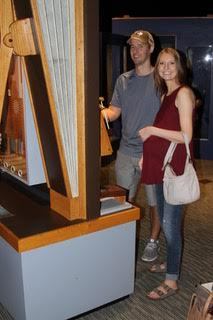 Shane and Rachael
Shane and Rachael  Brenda
Brenda  Shane and Preston
Shane and Preston  Brenda
Brenda  Shane, Rachael, Preston, and Olivia
Shane, Rachael, Preston, and Olivia  Olivia and Preston
Olivia and Preston  Frank
Frank  Brenda, Olivia, Preston, Shane, and Rachael on the beach in Galveston, Texas
Brenda, Olivia, Preston, Shane, and Rachael on the beach in Galveston, Texas  Shane and Rachael
Shane and Rachael  Rachael
Rachael  Frank
Frank  Frank
Frank  Shane, Rachael, Preston, and Olivia at Galveston Bay Beer Company in Dickinson, Texas
Shane, Rachael, Preston, and Olivia at Galveston Bay Beer Company in Dickinson, Texas  Rachael, Shane, Brenda, Preston, and Olivia at Rudy's Bar-B-Q
Rachael, Shane, Brenda, Preston, and Olivia at Rudy's Bar-B-Q
Published on July 13, 2018 00:00
July 1, 2018
The Bizarre Case of Susan Casey’s 5:30 a.m. Death
Frank spoke to the Real Housewives of Minneapolis book club at the Book Club Restaurant in Minneapolis on Saturday. It was a fast two and a half hours of great questions about forensics, Murder Book and the I-94 Murders. Thank you Norma Wade for arranging the opportunity! Frank will be in a suburb of Houston, Texas called League City discussing the books this week. 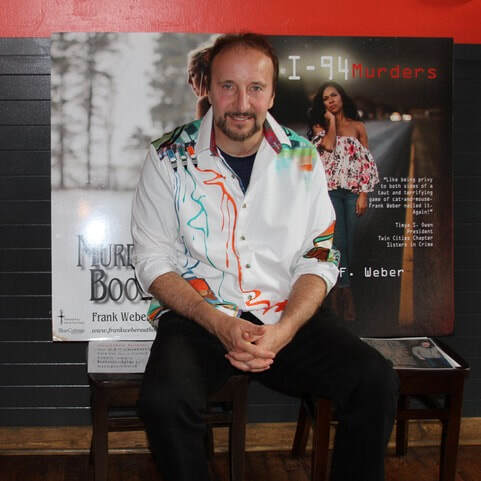
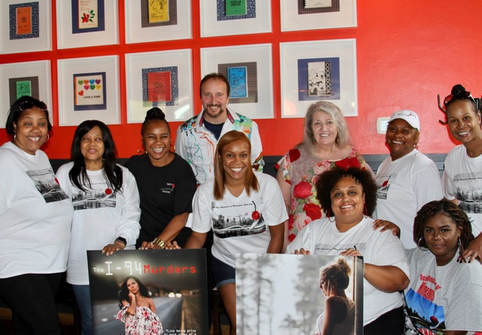
 Susan Casey, age 34, was murdered by one of the men in her life. All 3 converged at her home in Glendale, Montanna, at about 5:30 a.m. on April 12, 2008. None of the men interacted with each other. Susan Casey went missing from her house, never to be seen alive again. Investigators saw marks from her door where a body appeared to have been dragged. Susan Casey was described as fun-loving and kind by her family, friends and in-laws.
Susan Casey, age 34, was murdered by one of the men in her life. All 3 converged at her home in Glendale, Montanna, at about 5:30 a.m. on April 12, 2008. None of the men interacted with each other. Susan Casey went missing from her house, never to be seen alive again. Investigators saw marks from her door where a body appeared to have been dragged. Susan Casey was described as fun-loving and kind by her family, friends and in-laws.
Susan had been divorced twice and was settling into life as a single mother of 4 children.
Suspect #1: Susan had started to date Brad Holzer. On April 12, they had gone to a parking area, called the Intake, along the Yellowstone River, drank beer and made out. Susan did not put her bra back on and instead had put on Brad’s hooded sweat shirt. Brad returned her to her home at 5:19 a.m. They kissed and she walked across the street to her home as he drove away. Investigators discovered Brad was married. Brad and his wife slept in separate bedrooms. His wife indicated that Brad was home in bed when she checked in on him at 5:30 a.m. so he would not have had time to dispose of her body (after he dropped her off).
Suspect #2: When investigators asked why she checked in on her husband at 5:30 a.m. they learned she had been out with another man and had just returned home at 5:30 a.m. When she peaked in on Brad, he appeared to be asleep. The investigators found that her story checked out. She further told investigators that she had received anonymous calls from a man in the months prior that Brad was having an affair with a married woman—Susan Casey.
Suspect #3: Investigators found a video camera from an adjacent building that caught a van flashing by, and a truck similar to the one driven by Susan’s 2nd husband Ted Casey, going by at 5:30 a.m. Ted admitted that he had been out that night, but not around Susan. He missed her and decided to drive by her home, before going home. While the story seemed suspicious, they had no other evidence to suggest he had harmed her.
Suspect #4: Susan’s daughter found Susan’s phone by the home, and after trying a variety of passwords she finally guessed right and got into her mother’s phone to check the call list. She discovered that Susan had received a call from her father, Walter “Marty” Larson Jr., early in the morning before she disappeared. Marty was Susan’s first husband, and he lived 3 hours away in Billings. Investigators found a bank close by that had a camera, and checked to see if had a better shot of the van that drove by. The van belonged to none other than Walter “Marty” Larson Jr. Marty said he was worried about Susan and had driven from Billings to make sure she and the kids were okay. When Susan didn’t answer the door or his calls, he stopped at a gas station and drove back home.
Susan Casey’s body was found weeks later in the Yellowstone River. She’d been strangled to death.
Susan had been married to Walter Martin “Marty” Larson Jr. back in 1993 and the pair had two children together before they divorced in 1998. Marty did not want the divorce, and refused to visit the children initially following their divorce. Marty was charged with Trespassing and stalking Susan after their divorce.
Susan then married Ted Casey and they also had two kids together, though they had separated in 2007 and were getting divorced. After the 2nd failed marriage, Susan began seeing her 1st husband Marty Larson again, and Marty had high hopes of them getting back together permanently. However, he was shattered when he found out she had started to date another man, Brad Holzer. This led to him leaving numerous anonymous messages and sending aggressive emails. Susan had received a restraining order against Marty. Investigators found that Marty had stopped in at the gas station before he left as he reported. But he had stopped at 8:30 in the morning, giving him ample time to dispose of Susan’s body. A later search of Larson’s van also revealed that the interior “showed signs of harsh and vigorous cleaning,” court records state.
Prosecutors said “overwhelming” evidence, including bank security video showing Larson arrive outside the apartment and leave after Casey was dropped off by her new boyfriend. Light and Dawson County Attorney Olivia Norlin-Rieger also introduced at trial records of the numerous phone calls to Casey made by Larson in the hours before and after her disappearance. They said Larson became obsessed with the prospect of reuniting with his wife 10 years after their divorce, then killed her in a jealous rage when he learned she had begun dating another man. It is believed he choked her death outside of her home, dragged her body to his van, and then dumped her body in the river before leaving the area.
At his sentencing hearing, Casey’s family described the anguish they felt while searching for Casey until her body was found. Casey’s parents, three siblings and a sister-in-law all asked the judge to impose the longest sentence possible against Larson. “I do not understand how you could take the life of the mother of your children without a second thought,” said Casey’s sister, Kimberly Bradley. In 2008, Larson was found guilty and sentenced to 100 years in prison. He appealed the sentence in 2013, on the basis of investigators interviewing him before he had the chance to talk to an attorney, but the conviction was not overturned. It was determined that his statement to investigators when they arrived, “I knew this day would come,” was not an admission of guilt and subsequently didn’t significantly impact his conviction.
It is simply a bizarre circumstance that the 3 men in Susan’s adult life were all by her home at 5:30 a.m., moments before her death. It’s incredibly self-centered and sad that Marty Larson took Susan from his children’s lives, simply because he couldn’t have her.
Quotes: (from Stephen Wright)
Half the people you know, are below average.
Some friends of mine got me a sweater for my birthday. I'd have preferred a moaner or a screamer, but a sweater was okay…
I worked at a planetarium and played on their softball team and we practiced inside. We knew right where to stand. The 1st baseman stood under Mercury, the 2nd baseman under earth, and the 3rd baseman under Jupiter. We tried practicing outside once, but we were just way too far apart.
When I was in high school I asked my girlfriend if she’d always love me. She said, “I doubt it. I don’t love you right now.”
Thanks for listening,
Frank Brenda and I watched a band that used to be called "Merle Mallard and Ductones” get together and play at The Farm by St. Mathias.
 Preston’s band, Brother’s Tone and the Big Groove, had another outstanding live concert at Rock the Park in Little Falls for thousands of onlookers. Their next gig is at Freedom Fest in Pierz.
Preston’s band, Brother’s Tone and the Big Groove, had another outstanding live concert at Rock the Park in Little Falls for thousands of onlookers. Their next gig is at Freedom Fest in Pierz. 










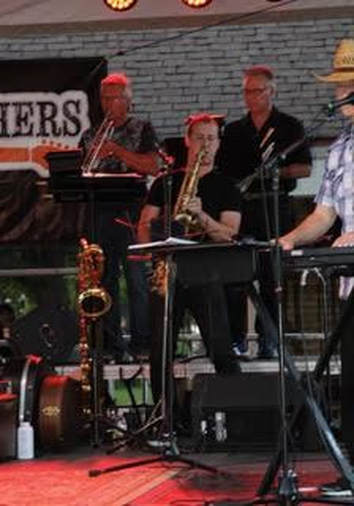
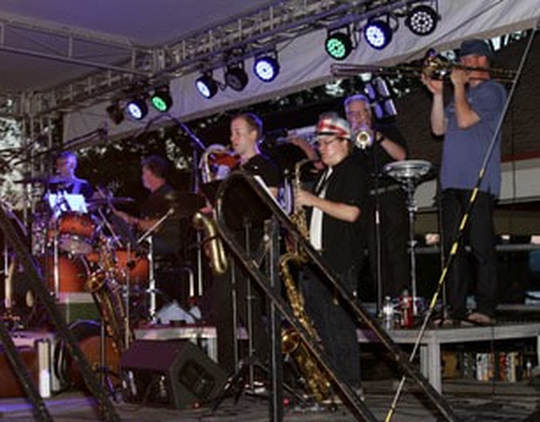
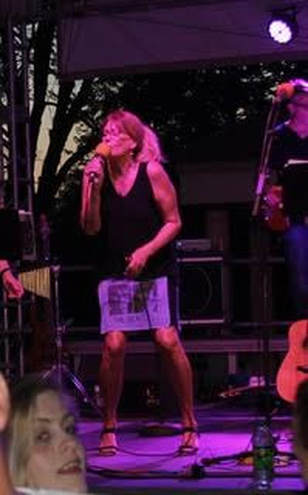



 Susan Casey, age 34, was murdered by one of the men in her life. All 3 converged at her home in Glendale, Montanna, at about 5:30 a.m. on April 12, 2008. None of the men interacted with each other. Susan Casey went missing from her house, never to be seen alive again. Investigators saw marks from her door where a body appeared to have been dragged. Susan Casey was described as fun-loving and kind by her family, friends and in-laws.
Susan Casey, age 34, was murdered by one of the men in her life. All 3 converged at her home in Glendale, Montanna, at about 5:30 a.m. on April 12, 2008. None of the men interacted with each other. Susan Casey went missing from her house, never to be seen alive again. Investigators saw marks from her door where a body appeared to have been dragged. Susan Casey was described as fun-loving and kind by her family, friends and in-laws. Susan had been divorced twice and was settling into life as a single mother of 4 children.
Suspect #1: Susan had started to date Brad Holzer. On April 12, they had gone to a parking area, called the Intake, along the Yellowstone River, drank beer and made out. Susan did not put her bra back on and instead had put on Brad’s hooded sweat shirt. Brad returned her to her home at 5:19 a.m. They kissed and she walked across the street to her home as he drove away. Investigators discovered Brad was married. Brad and his wife slept in separate bedrooms. His wife indicated that Brad was home in bed when she checked in on him at 5:30 a.m. so he would not have had time to dispose of her body (after he dropped her off).
Suspect #2: When investigators asked why she checked in on her husband at 5:30 a.m. they learned she had been out with another man and had just returned home at 5:30 a.m. When she peaked in on Brad, he appeared to be asleep. The investigators found that her story checked out. She further told investigators that she had received anonymous calls from a man in the months prior that Brad was having an affair with a married woman—Susan Casey.
Suspect #3: Investigators found a video camera from an adjacent building that caught a van flashing by, and a truck similar to the one driven by Susan’s 2nd husband Ted Casey, going by at 5:30 a.m. Ted admitted that he had been out that night, but not around Susan. He missed her and decided to drive by her home, before going home. While the story seemed suspicious, they had no other evidence to suggest he had harmed her.
Suspect #4: Susan’s daughter found Susan’s phone by the home, and after trying a variety of passwords she finally guessed right and got into her mother’s phone to check the call list. She discovered that Susan had received a call from her father, Walter “Marty” Larson Jr., early in the morning before she disappeared. Marty was Susan’s first husband, and he lived 3 hours away in Billings. Investigators found a bank close by that had a camera, and checked to see if had a better shot of the van that drove by. The van belonged to none other than Walter “Marty” Larson Jr. Marty said he was worried about Susan and had driven from Billings to make sure she and the kids were okay. When Susan didn’t answer the door or his calls, he stopped at a gas station and drove back home.
Susan Casey’s body was found weeks later in the Yellowstone River. She’d been strangled to death.
Susan had been married to Walter Martin “Marty” Larson Jr. back in 1993 and the pair had two children together before they divorced in 1998. Marty did not want the divorce, and refused to visit the children initially following their divorce. Marty was charged with Trespassing and stalking Susan after their divorce.
Susan then married Ted Casey and they also had two kids together, though they had separated in 2007 and were getting divorced. After the 2nd failed marriage, Susan began seeing her 1st husband Marty Larson again, and Marty had high hopes of them getting back together permanently. However, he was shattered when he found out she had started to date another man, Brad Holzer. This led to him leaving numerous anonymous messages and sending aggressive emails. Susan had received a restraining order against Marty. Investigators found that Marty had stopped in at the gas station before he left as he reported. But he had stopped at 8:30 in the morning, giving him ample time to dispose of Susan’s body. A later search of Larson’s van also revealed that the interior “showed signs of harsh and vigorous cleaning,” court records state.
Prosecutors said “overwhelming” evidence, including bank security video showing Larson arrive outside the apartment and leave after Casey was dropped off by her new boyfriend. Light and Dawson County Attorney Olivia Norlin-Rieger also introduced at trial records of the numerous phone calls to Casey made by Larson in the hours before and after her disappearance. They said Larson became obsessed with the prospect of reuniting with his wife 10 years after their divorce, then killed her in a jealous rage when he learned she had begun dating another man. It is believed he choked her death outside of her home, dragged her body to his van, and then dumped her body in the river before leaving the area.
At his sentencing hearing, Casey’s family described the anguish they felt while searching for Casey until her body was found. Casey’s parents, three siblings and a sister-in-law all asked the judge to impose the longest sentence possible against Larson. “I do not understand how you could take the life of the mother of your children without a second thought,” said Casey’s sister, Kimberly Bradley. In 2008, Larson was found guilty and sentenced to 100 years in prison. He appealed the sentence in 2013, on the basis of investigators interviewing him before he had the chance to talk to an attorney, but the conviction was not overturned. It was determined that his statement to investigators when they arrived, “I knew this day would come,” was not an admission of guilt and subsequently didn’t significantly impact his conviction.
It is simply a bizarre circumstance that the 3 men in Susan’s adult life were all by her home at 5:30 a.m., moments before her death. It’s incredibly self-centered and sad that Marty Larson took Susan from his children’s lives, simply because he couldn’t have her.
Quotes: (from Stephen Wright)
Half the people you know, are below average.
Some friends of mine got me a sweater for my birthday. I'd have preferred a moaner or a screamer, but a sweater was okay…
I worked at a planetarium and played on their softball team and we practiced inside. We knew right where to stand. The 1st baseman stood under Mercury, the 2nd baseman under earth, and the 3rd baseman under Jupiter. We tried practicing outside once, but we were just way too far apart.
When I was in high school I asked my girlfriend if she’d always love me. She said, “I doubt it. I don’t love you right now.”
Thanks for listening,
Frank Brenda and I watched a band that used to be called "Merle Mallard and Ductones” get together and play at The Farm by St. Mathias.

 Preston’s band, Brother’s Tone and the Big Groove, had another outstanding live concert at Rock the Park in Little Falls for thousands of onlookers. Their next gig is at Freedom Fest in Pierz.
Preston’s band, Brother’s Tone and the Big Groove, had another outstanding live concert at Rock the Park in Little Falls for thousands of onlookers. Their next gig is at Freedom Fest in Pierz. 














Published on July 01, 2018 15:22
June 23, 2018
Coors Kidnapped
 Frank signing books at the Beagle and Wolf book event in Park Rapids. Adolph Coors III was a low-key and well-liked beer executive. His father, Adolph Coors Jr., was a hard taskmaster, who ultimately gave control of the brewery to his 3 sons (Adolph III and his brothers, Bill and Joe). The brothers were expected to join the family business, although Adolph’s dream was to own a cattle and horse operation, and his brother Bill once confessed he had wanted to be a violinist until they both succumbed to “the family responsibility.” Ironically, much to his father’s disgust, Adolph III was allergic to beer. Adolph graduated from Cornell University, where he was president of the Quill and Dagger society. Coors was also a semi-professional baseball player. At the time of his death, he was CEO and Chairman of the Board of the Coors Brewing Company in Golden, Colorado. Coors married Mary Urquhart Grant in November 1940.
Frank signing books at the Beagle and Wolf book event in Park Rapids. Adolph Coors III was a low-key and well-liked beer executive. His father, Adolph Coors Jr., was a hard taskmaster, who ultimately gave control of the brewery to his 3 sons (Adolph III and his brothers, Bill and Joe). The brothers were expected to join the family business, although Adolph’s dream was to own a cattle and horse operation, and his brother Bill once confessed he had wanted to be a violinist until they both succumbed to “the family responsibility.” Ironically, much to his father’s disgust, Adolph III was allergic to beer. Adolph graduated from Cornell University, where he was president of the Quill and Dagger society. Coors was also a semi-professional baseball player. At the time of his death, he was CEO and Chairman of the Board of the Coors Brewing Company in Golden, Colorado. Coors married Mary Urquhart Grant in November 1940.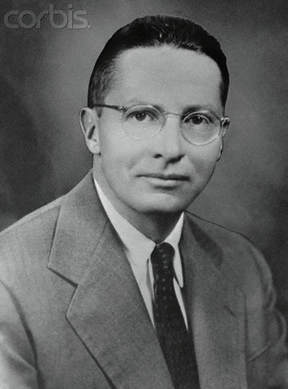 Adolph Coors III in the late 1950s
Adolph Coors III in the late 1950s  This March 19, 1951 mug shot was taken upon Joseph Corbett, Jr.’s incarceration at the California Institution for Men in Chino, California, where he was sentenced to five years after pleading guilty to second-degree murder. He escaped from prison and committed the kidnapping and murder of Adolph Coors, III while a fugitive. On February 9, 1960, a milkman moving a car blocking a bridge to the side of the road noticed a reddish-brown stain on the bridge and a hat on the edge of the river bank below. The milkman reported the matter to the local police, who quickly determined that the car belonged to Adolph Coors, III. Heir to the Coors Brewing Company fortune, Coors had left his house—not far from the bridge—that morning, but had not been seen since. Searchers soon spread out over the area looking for the missing 45-year-old father of four. The hat belonged to Coors, but no trace of him was found during the wider search. Adolph Coors’ wife, Mary, received a typewritten note that day demanding a ransom for the return of her husband. Under the guidance of law enforcement, she followed the instructions regarding contacting the kidnapper but heard nothing back.
This March 19, 1951 mug shot was taken upon Joseph Corbett, Jr.’s incarceration at the California Institution for Men in Chino, California, where he was sentenced to five years after pleading guilty to second-degree murder. He escaped from prison and committed the kidnapping and murder of Adolph Coors, III while a fugitive. On February 9, 1960, a milkman moving a car blocking a bridge to the side of the road noticed a reddish-brown stain on the bridge and a hat on the edge of the river bank below. The milkman reported the matter to the local police, who quickly determined that the car belonged to Adolph Coors, III. Heir to the Coors Brewing Company fortune, Coors had left his house—not far from the bridge—that morning, but had not been seen since. Searchers soon spread out over the area looking for the missing 45-year-old father of four. The hat belonged to Coors, but no trace of him was found during the wider search. Adolph Coors’ wife, Mary, received a typewritten note that day demanding a ransom for the return of her husband. Under the guidance of law enforcement, she followed the instructions regarding contacting the kidnapper but heard nothing back.
State and local police pursued leads closer to the scene of the crime, conducting extensive interviews and other investigative activities. They soon focused on a canary yellow Mercury that had been seen in the area on several occasions and tried to track down its driver, a man who called himself Walter Osborne. The FBI learned that Osborne had disappeared around the time of Coors’ abduction, but before doing so had obtained a gun, handcuffs, and a typewriter (of the brand used to type the ransom note). The Bureau also learned that Osborne had obtained an insurance policy at a previous job, and that policy designated a man named Joseph Corbett as his beneficiary, and ultimately that Walter Osborne was Joseph Corbett Jr. Joseph Corbett, Jr. was placed on the FBI Ten Most Wanted Fugitives list for the murder of the Coors Brewery heir, Adolf Coors.
Joseph Corbett Jr. (October 25, 1928 – August 24, 2009) was a former Fulbright scholar at the University of Oregon. Corbett was convicted of shooting a man in the back of the head in 1951, which he claimed was self-defense. Corbett was placed in a maximum-security prison in California, and due to good behavior, was later transferred to minimum security, from which he then escaped. Corbett had an ongoing fascination with Lindbergh kidnapping case.
 Throughout the summer of 1960, Corbett, Jr.’s trail remained cold. But tragically, the trail leading to Adolph Coors ended on September 11, 1960, when hikers in the woods about 12 miles southwest of Sedalia (a town south of Denver) came across items of clothing, and skeletal remains determined to belong to Coors. A jacket and shirt had bullet holes that showed he had been shot in the back, and an analysis of a shoulder bone confirmed this.
Throughout the summer of 1960, Corbett, Jr.’s trail remained cold. But tragically, the trail leading to Adolph Coors ended on September 11, 1960, when hikers in the woods about 12 miles southwest of Sedalia (a town south of Denver) came across items of clothing, and skeletal remains determined to belong to Coors. A jacket and shirt had bullet holes that showed he had been shot in the back, and an analysis of a shoulder bone confirmed this.A manager of a rooming house in Winnipeg called police to report that a man who looked like the Corbett had recently stayed at her flophouse. When the FBI knocked on the door, Corbett answered, “I give up. I’m the man you want.” Joseph Corbett had carefully planned the kidnapping, but like most major crimes, things happen that are never anticipated. Corbett had followed Coors for week and discovered he crossed a one-lane bridge every day on his way to work in an isolated country area near Morrison, Colorado. Corbett parked his car on the bridge, pretending it had broken down, and when Adolph Coors approached to help him, Corbett pulled out a gun and ordered Coors in the vehicle. But instead of complying, Coors fought him and took off running. Corbett shot Coors in the back, multiple times, killing him. After the murder, Corbett burned his car to destroy any evidence.
The FBI was able to prove the ransom note was typed on Corbett, Jr.’s typewriter, on paper with an unusual watermark that Corbett had purchased. Adolph Coors’ niece had recognized Corbett as being in the vicinity of Coors in the weeks prior to the murder. But the most damning evidence came from one of the first cases of remarkable work done by a forensics lab. They examined Corbett’s burned-out canary yellow Mercury, which was recovered in New Jersey shortly after Coors’ disappearance, and found that even though the interior had been burned out, there was soil still stuck on the car that contained minerals only found in the area near the bridge, where Coors had been murdered. On March 19, 1961, Joseph Corbett, Jr. was convicted and sentenced to life in prison. He was paroled and released from prison on December 12, 1980 (which seems a little light considering he’d been convicted of 2 separate murders). Corbett would shoot one more person. On August 24, 2009, Corbett, who was 80 and had been suffering from cancer, was found dead in his apartment as a result of a single self-inflicted gunshot wound to the head.
Coors/Miller is now the largest American owned brewery, ever since Budweiser was purchased by a Belgium company. Prior to 1981, Coors beer could only be purchased in Colorado. My older brothers made a trip to California after high school, and paid for the trip by loading the car with Coors beer when they returned through Colorado, and selling it in Minnesota when they returned. My niece, Kate, is employed at the Coors Brewery in Golden, Colorado.
Politicians haven’t been listening for 50 years
For example: The National Advisory Commission on Civil Disorders, known as the Kerner Commission, was an 11-member Presidential Commission established by President Lyndon B. Johnson to investigate the causes of the 1967 race riots in the United States and to provide recommendations for the future.
President Johnson appointed the commission on July 28, 1967, while rioting was still underway in Detroit. Mounting civil unrest since 1965 had spawned riots in the black and Latino neighborhoods of major U.S. cities, including Los Angeles (Watts riots of 1965), Chicago (Division Street Riots of 1966, the first Puerto Rican riot in US History), and Newark (1967 Newark riots). In LBJ’s remarks upon signing the order establishing the commission, Johnson asked for answers to three basic questions about the riots: "What happened? Why did it happen? What can be done to prevent it from happening again and again?"
Report Summary
The Commission's final report, or Kerner Report, was released on February 29, 1968, after seven months of investigation. The report became an instant bestseller, and over two million Americans bought copies of the 426-page document. Its finding was that the riots resulted from frustration over the lack of economic opportunity for poor Americans.
The Commission's suggestions included:
"Providing employment for the swelling African American ghetto population will require ...opening suburban residential areas to African Americans and encouraging them to move closer to industrial centers..."
"...cities will have African American majorities by 1985 and the suburbs ringing them will remain largely all white unless there are major changes in public policy."
"...we believe that the emphasis of the program should be changed from traditional publicly built slum based high rise projects to smaller units on scattered sites."
Aftermath
President Johnson, who had already pushed through the Civil Rights Act and the Voting Rights Act, ignored the report and rejected the Kerner Commission's recommendations. In April 1968, one month after the release of the Kerner report, rioting broke out in more than 100 cities following the assassination of civil rights leader Martin Luther King, Jr.
Quotes (The last of my Mitch Hedburg quotes—God rest his soul!)
One time a guy handed me a picture, and said "Here's a picture of me when I was younger." Every picture of you, is when you were younger.
I don't have a girlfriend, but I do know a girl who would be really angry if she heard me say that.
I used to be a hot tar roofer. Yeah, I remember that day.
I had a paper route when I was a kid. I was a paperboy. I was supposed to go to 2,000 houses... or one dumpster.
I find that a duck's opinion of me is very much influenced over whether or not I have bread.
You know when you go to a restaurant on the weekends, it's busy, so they start a waiting list. They start calling out names, they say "Dufrane, party of two. Table ready for Dufrane, party of two." And if no one answers, they'll say their name again. "Dufrane, party of two." But then if no one answers they'll just go right on to the next name. "Bush, party of three." Yeah, but what happened to the Dufranes? No one seems to care. Who can eat at a time like this? People are missing. You people are selfish. The Dufranes could be in someone's trunk right now, with duct tape over their mouths, and they're hungry - that's a double whammy. We need help. They should announce, "Bush, SEARCH party of three! You can eat once you find the Dufranes."
My belt holds up my pants, but my pants have belt loops that hold up the belt. So who is the real hero?
Thanks for listening,
Frank
 Preston gives Brenda, Alex and Blake a lesson in virtual reality.
Preston gives Brenda, Alex and Blake a lesson in virtual reality. 





 Eating at Bohemia
Eating at Bohemia  Minnesota summer!
Minnesota summer! 

 Miss you Dad! Because of you I am a happy father, and grandfather!
Miss you Dad! Because of you I am a happy father, and grandfather!  I won’t watch a game where players don’t stand for the national anthem. I won’t even buy a ticket if I suspect the players won’t stand. I respect anyone who died for noble reasons and so did my father. Any struggles in my personal life, or frustration about politics, doesn’t diminish that respect for others. NFL--find another way to express your frustration.
I won’t watch a game where players don’t stand for the national anthem. I won’t even buy a ticket if I suspect the players won’t stand. I respect anyone who died for noble reasons and so did my father. Any struggles in my personal life, or frustration about politics, doesn’t diminish that respect for others. NFL--find another way to express your frustration. 
 Preston, John LaFlamme and friends play at Grubers Quilt shop in St. Cloud
Preston, John LaFlamme and friends play at Grubers Quilt shop in St. Cloud 


 Webers play in Father’s Day baseball tournament in St. Mathias. Charlie Weber.
Webers play in Father’s Day baseball tournament in St. Mathias. Charlie Weber.  John
John  Frank
Frank  Aaron
Aaron  Preston
Preston  Frank
Frank  John
John 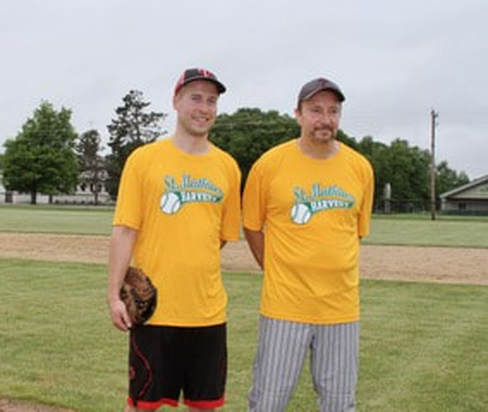 Preston and Frank
Preston and Frank 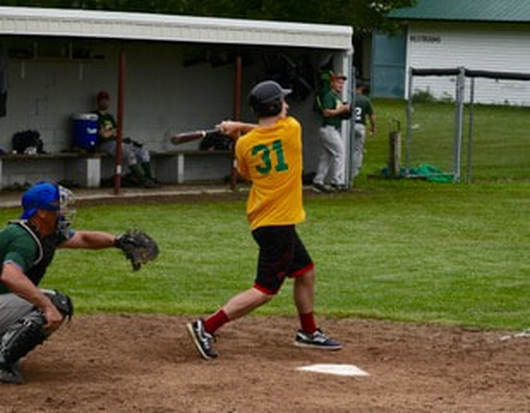 Preston
Preston 
 Aaron, George, Michael, and Breck
Aaron, George, Michael, and Breck  Breck
Breck  Michael and Breck
Michael and Breck  Michael
Michael  Visiting the Deal family in Maryland. Kaycee and Andrea.
Visiting the Deal family in Maryland. Kaycee and Andrea.  Kaycee, Frank, and Andrea
Kaycee, Frank, and Andrea  The Deals - Nicolette, Kaycee, Branden, and Andrea.
The Deals - Nicolette, Kaycee, Branden, and Andrea. 

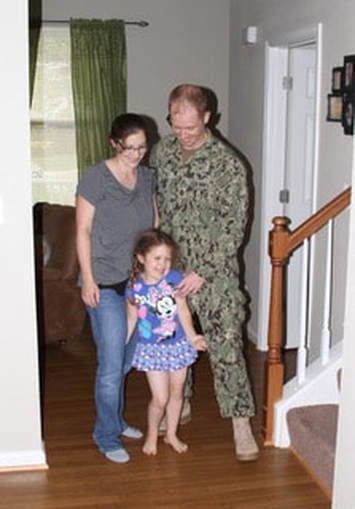


 Nicolette and Kaycee, Brenda and Andrea
Nicolette and Kaycee, Brenda and Andrea 





Published on June 23, 2018 13:53
June 6, 2018
Robert Yates
 Frank enjoying fish and chips at the Old Brickhouse in St. Cloud A case of 2 serial killers killing prostitutes in the same city-- solved
Frank enjoying fish and chips at the Old Brickhouse in St. Cloud A case of 2 serial killers killing prostitutes in the same city-- solvedIn Spokane, Washington, three women living at a motel were murdered weeks apart. On February 22, 1990, Yolanda Sapp was murdered. Yolanda was a 26-year-old mother of two daughters, was engaged to be married, and a prostitute. Her daughters described her as a loving mother, and they didn’t know she was a prostitute until they read about her murder in the paper. Yolanda was shot 3 times with a .22 caliber gun and dumped naked along the Spokane River.
 Yolanda Sapp Two months later, Vicki Lowe, 34, was the 2nd victim shot 3 times by a .22 caliber bullet. She had also lived in the Spokane Street Motel (the same motel as Yolanda) and was also a prostitute. Vicki’s naked body was dumped under the Green Street Bridge along the Spokane River.
Yolanda Sapp Two months later, Vicki Lowe, 34, was the 2nd victim shot 3 times by a .22 caliber bullet. She had also lived in the Spokane Street Motel (the same motel as Yolanda) and was also a prostitute. Vicki’s naked body was dumped under the Green Street Bridge along the Spokane River.Kathy Brisbois, 38, was the 3rd victim. Kathy was described as a vibrant young woman who, as a result of drug addiction, ended up on the streets. She was prostitute who had a case worker who was trying to get her into a drug rehabilitation program. Cathy also lived at the Spokane Street Motel. She was shot by a low caliber handgun also. All three of the bodies were dropped along the Spokane River.
 Kathy Brisbois The twist in this case would simply not be believable if it wasn’t true. Shannon Zalinski, a prostitute, called the police from jail to report she knew the killer. But when they interviewed Shannon, she only provided vague information. Shannon knew the previous 3 victims and had lived at the same motel. Shannon was then found murdered and was believed to be the 4th victim. There was a slight difference. Shannon had been shot with a .25 and she was the first victim to have a bag over her head. It was later discovered, believe it or not, Shannon was killed by a different Spokane serial killer than the first 3 victims.
Kathy Brisbois The twist in this case would simply not be believable if it wasn’t true. Shannon Zalinski, a prostitute, called the police from jail to report she knew the killer. But when they interviewed Shannon, she only provided vague information. Shannon knew the previous 3 victims and had lived at the same motel. Shannon was then found murdered and was believed to be the 4th victim. There was a slight difference. Shannon had been shot with a .25 and she was the first victim to have a bag over her head. It was later discovered, believe it or not, Shannon was killed by a different Spokane serial killer than the first 3 victims.On August 26, 1997, Heather Hernandez, 20, a drifter, and Jennifer Joseph, 16, a runaway, were found dead. By December, 5 more victims were discovered. All were shot in the head with handguns and found dumped by roadsides with plastic grocery bags over their heads. None had purses or wallets. The break came when a witness came forth later and said she saw Jennifer Joseph get into a white corvette on East Sprague Avenue. The police began pulling over and searching white corvettes. The killer was stopped, but that particular officer had misread the memo and was looking for a white Camaro instead. He released Robert Yates. The corvette was eventually tracked down and a button from Jennifer Joseph’s shirt and her blood was found in Robert Yates’ car. Yates committed 11 additional murders after Jennifer Joseph. Yates confessed to 13 murders, but denied the first three identified in this blog. It was discovered Yates was in Germany when the first 3 murders were committed, indicating to investigators that another killer had been killing prostitutes in Spokane at the same time.
 Jennifer Joseph So who killed them? Re-examination of the DNA evidence of the first 3 victims found that Kathy Brisboe had scratched the killer in a fight for her life, so they had the killer’s DNA. Three more years go by, until a match is made in 2010. Douglas Perry had a 2nd Degree Assault in the 1970’s, and arrested for making a pipe bomb in the 1980’s. He was arrested in 1989 for soliciting a prostitute. Perry was arrested in 1988 for being a felon in possession of a firearm, with 49 firearms and 22,000 rounds of ammunition in his possession at the time. Douglas Perry was living with his adult female partner, a prostitute, at the time of the murders. His partner had children but they had been removed from her care by child protection. Douglas Perry killed the three women in part because he was jealous of their ability to have children. Their bodies were left either naked or with their breasts and genitals exposed. Another twist is that at the time of the arrest, Perry was no longer a man. In 1999, Perry flew to Bangkok, Thailand, underwent gender reassignment surgery, and changed his name from Donald Perry to Donna Perry. “Donna” argued that she was not a killer, and the murders had to be blamed on Doug (her former identity). Donna Perry was sentenced to 3 life sentences in prison without parole.
Jennifer Joseph So who killed them? Re-examination of the DNA evidence of the first 3 victims found that Kathy Brisboe had scratched the killer in a fight for her life, so they had the killer’s DNA. Three more years go by, until a match is made in 2010. Douglas Perry had a 2nd Degree Assault in the 1970’s, and arrested for making a pipe bomb in the 1980’s. He was arrested in 1989 for soliciting a prostitute. Perry was arrested in 1988 for being a felon in possession of a firearm, with 49 firearms and 22,000 rounds of ammunition in his possession at the time. Douglas Perry was living with his adult female partner, a prostitute, at the time of the murders. His partner had children but they had been removed from her care by child protection. Douglas Perry killed the three women in part because he was jealous of their ability to have children. Their bodies were left either naked or with their breasts and genitals exposed. Another twist is that at the time of the arrest, Perry was no longer a man. In 1999, Perry flew to Bangkok, Thailand, underwent gender reassignment surgery, and changed his name from Donald Perry to Donna Perry. “Donna” argued that she was not a killer, and the murders had to be blamed on Doug (her former identity). Donna Perry was sentenced to 3 life sentences in prison without parole.  Douglas Perry Robert Lee Yates Jr. (born May 27, 1952) is an American serial killer from Spokane, Washington. From 1996 to 1998, Yates is known to have murdered at least 13 women, all of whom were sex workers working on East Sprague Avenue, in Spokane. Yates also confessed to 2 murders committed in Walla Walla in 1975 and a 1988 murder committed in Skagit County. In 2002, Yates was convicted of killing two women in Pierce County. He currently is on death row at the Washington State Penitentiary.
Douglas Perry Robert Lee Yates Jr. (born May 27, 1952) is an American serial killer from Spokane, Washington. From 1996 to 1998, Yates is known to have murdered at least 13 women, all of whom were sex workers working on East Sprague Avenue, in Spokane. Yates also confessed to 2 murders committed in Walla Walla in 1975 and a 1988 murder committed in Skagit County. In 2002, Yates was convicted of killing two women in Pierce County. He currently is on death row at the Washington State Penitentiary.Early Life
Yates grew up in Oak Harbor, Washington in a middle-class family. He graduated from Oak Harbor High School in 1970, and in 1975, he was hired by the Washington State Department of Corrections to work as a correction officer at the Washington State Penitentiary in Walla Walla. In October, 1977, Yates enlisted in the United States Army, in which he became certified to fly civilian transport airplanes and helicopters. Yates was stationed in various countries outside the continental United States, including Germany and later Somalia and Haiti during the United Nations peacekeeping missions of the 1990s. Yates left the Army in April, 1996.
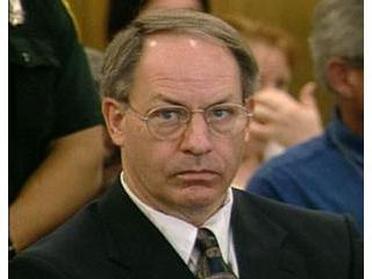 Robert Yates Murders
Robert Yates MurdersThe murders Robert Yates committed between 1996 and 1998 in Spokane all involved prostitutes working along Spokane's East Sprague Avenue. The victims were initially solicited for prostitution by Yates, who would have sex with them (often in his 1979 Ford van), sometimes do drugs with them, then kill them and dump their bodies in rural locations. All of his victims died of gunshot wounds to the head; 8 of the murders were committed with a Raven .25-caliber handgun, and one attempted murder was linked to the same model of handgun. Autopsies of two of the victims indicated that the killer was a marksman aiming for the heart. One particularly bizarre detail of Yates' murders involved the case of Melody Murfin, whose body was buried just outside the bedroom window of Yates' family home.
On August 1, 1998, Yates picked up prostitute Christine Smith, who managed to escape after being shot, assaulted and robbed. On September 19, 1998, Yates was asked to give a DNA sample to Spokane police after being stopped; he refused, stating that it was too extreme of a request for a "family man."
Oddly enough, without his confession, Yates’ first 2 murders would have never been solved. This was an execution. Here is their story:
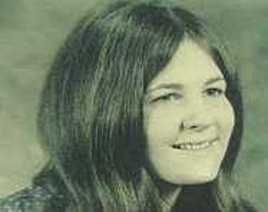 Susan Savage
Susan Savage 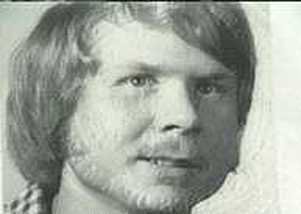 Patrick Oliver On a summer afternoon, on July 13, 1975, Patrick Oliver, 21, an honor-roll pre-med student who had studied at the Sorbonne in Paris, and Susan Savage, 22, a recent graduate of Washington State University, were at a popular swimming hole on Mill Creek, a dozen miles southeast of Walla Walla. Walla Walla authorities had exhausted their investigation into the slayings according to Larry Siegel, the deputy prosecuting attorney who had the lead in the case. "We had two or three good suspects, but they ended up going nowhere," he said. Speculation about what happened had run from the mundane - a robbery gone bad, perhaps - to the extreme. "At one point, we considered it might have been a professional hit . . . or maybe, somehow, was gang related," Siegel said. Even Interpol was called because Oliver had recently returned from Europe, but to no avail. "We frankly ran out of ideas as to why anybody would want to kill them."
Patrick Oliver On a summer afternoon, on July 13, 1975, Patrick Oliver, 21, an honor-roll pre-med student who had studied at the Sorbonne in Paris, and Susan Savage, 22, a recent graduate of Washington State University, were at a popular swimming hole on Mill Creek, a dozen miles southeast of Walla Walla. Walla Walla authorities had exhausted their investigation into the slayings according to Larry Siegel, the deputy prosecuting attorney who had the lead in the case. "We had two or three good suspects, but they ended up going nowhere," he said. Speculation about what happened had run from the mundane - a robbery gone bad, perhaps - to the extreme. "At one point, we considered it might have been a professional hit . . . or maybe, somehow, was gang related," Siegel said. Even Interpol was called because Oliver had recently returned from Europe, but to no avail. "We frankly ran out of ideas as to why anybody would want to kill them."Robert Lee Yates, age 23, came upon a pair of local college students picnicking beneath a stand of poplar trees and he shot them both dead. Patrick Oliver is the only man Yates is believed to have killed. According to sheriff's investigators and prosecutors, even now, nobody is quite sure why. The bodies were dragged, perhaps as far as 30 yards, across the river and secreted beneath a tire and some brush. The woman was partially clothed. There was no indication, however, that Patrick and Susan had been anything but friends. "But I don't think it was planned," the sheriff said. "I think he ran into them up there and there was some sort of confrontation, and he shot them.” Both victims had gunshot wounds in their arms, indicating they had tried to deflect the shots. Both died from being shot in the head. "I remember thinking that it almost seemed like an execution," Siegel recalled.
When Robert Yates was arrested for killing a dozen prostitutes in Spokane, the sheriff opened an investigation and found that Yates had bought a box of .357 caliber shells from a local store 10 days before the killings. "They matched the caliber and brand of bullets from our crime," the sheriff said. His detectives learned from friends and family that Yates regularly went to the Mill Creek area for target practice. Yates left the Walla Walla area, where his wife's family lived, shortly after the killings and sold the handgun in Oak Harbor in 1976. Investigators were able to track that handgun after his confession and use it as evidence.
Convictions and Appeals
Yates was arrested on April 18, 2000, for the murder of Jennifer Joseph. In 2000, he was charged with 13 counts of first-degree murder and one count of attempted first-degree murder. As part of a plea bargain in which Yates confessed to the murders to avoid the death penalty, he was sentenced to 408 years in prison.
In 2001 Yates was charged in Pierce County with the murders of two additional women. The prosecution sought the death penalty for the deaths of Melinda L. Mercer in 1997 and Connie Ellis in 1998, which were thought to be linked to the killings in Spokane County. On September 19, 2002, Yates was convicted of those murders and subsequently sentenced to death by lethal injection on October 3, 2002.
The 2002 death sentence was appealed on grounds that Yates believed his 2000 plea bargain to be "all-encompassing," and that a life sentence for 13 murders and a death sentence for two constituted "disproportionate, freakish, wanton and random" application of the death penalty. The arguments were rejected in 2007 by the Washington Supreme Court. A September 19, 2008 execution date was stayed by Chief Justice Gerry L. Alexander pending additional appeals.
In 2013, Yates's attorneys filed a habeas corpus petition, stating that Yates is mentally ill and "through no fault of his own ... suffers from a severe paraphilic disorder" that predisposed him to commit murder. "I don't think Mr. Yates helps his cause by relying on the fact that he's a necrophiliac (someone who has sex with dead bodies)” said Pierce County Prosecutor Mark Lindquist. In July 2015, the Washington Supreme Court once again rejected an effort by Yates to overturn his conviction and death sentence. Yates remains on death row at the Washington State Penitentiary.
Victims
Name / Date of discovery
Patrick Oliver / July 13, 1975
Susan Savage / July 13, 1975
Stacy E. Hawn / December 28, 1988
Shannon Zielinski / June 14, 1996
Patricia Barnes / August 25, 1996
Heather Hernandez / August 26, 1997
Jennifer Joseph / August 26, 1997
Darla Scott / November 5, 1997
Melinda Mercer / December 7, 1997
Shawn Johnson / December 18, 1997
Linda M. Maybin / December 26, 1997
Shawn A. McClenahan / December 26, 1997
Laurie Wason / December 26, 1997
Sunny Oster / February 8, 1998
Linda Daveys / April 1, 1998
Melody Murfin / May 12, 1998
Michelyn Derning / July 7, 1998
Connie LaFontaine Ellis / October 13, 1998
Every one of the above people had people who cared about them. Shawn Ann McClenahan’s sister wrote: Shawn was born May 30, 1958. My sister attended schools in Spokane, Washington. She attended Spokane Community College and worked very hard to get her degree. She then went on to work in area hospitals. She did well until she was diagnosed with carpal tunnel and could no longer work. Eventually drugs took over her life and she fell into prostitution, to get the money for heroin. The month she died she had sent me a birthday card expressing her love for myself and my family. She said to tell the family she had just been accepted into a methadone program. Shawn had been living at a relative's house and was babysitting their children. She was last seen driving away from their home with two other women, in, I believe a van (not hers). She called the next morning, Dec. 18, 1997 to say that she would be late, but that she would be there. That was the last anyone heard from her until she was found Dec. 26, 1997.
And there is at least 1 more uncharged victim: In August 1998, Christine Smith remembers a man about 50, 5 ft. 10 in. tall, blue-eyed, picking her up on East Sprague at about 1 a.m. "You're not the psycho killer, are you?" she asked as she climbed in. As they drove to a secluded spot, he told her he was a helicopter pilot for the National Guard. He was not a murderer, he told her, because he had five kids and "wouldn't do that." He was calm and--unlike many of her customers--sober. He paid Smith $40 for oral sex. Then suddenly she felt a blow to her head. At first she did not know what hit her. As blood gushed from the wound, she almost lost consciousness. The man asked for her money, but Smith managed to scramble out of the vehicle. At the hospital, the wound, mistakenly deemed a knife cut, was sewn up with three stitches. It was not until early in 2000, when Smith was in a car accident that required a head X ray, that she discovered shrapnel: the 1998 attack had in fact been a shooting, and she had been too shaken at the time to realize it. Smith's police report of the incident would remain buried in a police file until 2000.
This song reminds me of the wonderful sounds of Motown from the past. On a nice summer night, Brenda and I were walking in Pierz, and numerous families were sitting in their yards roasting marshmallows over a fire. A young girl was holding a stick with flaming marshmallow singing the Alicia Keys tune, “This girl is on fire…”
Quotes: (More Mitch Hedburg—but getting to the end)
I saw on HBO they were advertising this boxing match, it said "It's a fight to the finish"... that's as good a place as any to end.
I think Big Foot is blurry, that's the problem.
This one commercial said "Forget everything you know about slip covers," so I did. And what a load that was off my mind. Then they tried to sell me slip covers, but I didn't know what they were talking about.
I opened up a yogurt, it said "Please try again" because they were having a contest I was unaware of. At first, I thought I might have opened the yogurt wrong. And then I considered maybe it’s a moment of inspiration from our friends at Yoplait. “Don’t give up Mitch. Please try again.”
Thanks for listening,
Frank
 A meal at Travail
A meal at Travail 

 Andrea and Kaycee Deal
Andrea and Kaycee Deal  The Bash Brothers, Austin and Brandon Dickman, were part of the attack that lead Pierz to a come from behind extra inning victory, 5-4, in playoffs over Royalton. Isaac Otte had a 10 pitch at bat with 2 out in the last inning, before driving in 2 runs to tie the game in this hard fought battle between two excellent teams. Pierz has since beat Albany 2-0 and Foley 2-0 in playoffs.
The Bash Brothers, Austin and Brandon Dickman, were part of the attack that lead Pierz to a come from behind extra inning victory, 5-4, in playoffs over Royalton. Isaac Otte had a 10 pitch at bat with 2 out in the last inning, before driving in 2 runs to tie the game in this hard fought battle between two excellent teams. Pierz has since beat Albany 2-0 and Foley 2-0 in playoffs. 




















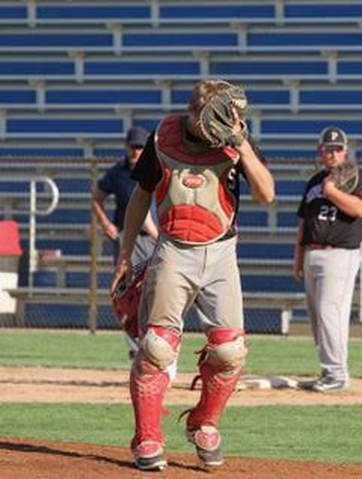
























Published on June 06, 2018 16:29
May 29, 2018
Kala Brown was Kidnapped
Frank will be speaking to the Real Housewives of Minneapolis book club on Murder Book on Saturday, June 30th at 3:30 pm at the Book Club Restaurant at 5411 Penn Avenue South in Minneapolis MN 55419.  Memorial Day in Pierz. Thank you to my dad, Leo Weber, the Branden Deal family, and everyone who serves our country for the benefit of all of us!
Memorial Day in Pierz. Thank you to my dad, Leo Weber, the Branden Deal family, and everyone who serves our country for the benefit of all of us!  Pierz Park
Pierz Park  Kala Brown, age 30, was employed at a dialysis department and did some part-time cleaning for a real estate agent in Spartanburg, South Carolina. Kala had recently met Charlie Carver and they quickly fell in love with each other. Kala and Charlie disappeared on August 31, 2016. Charlie was recently divorced and his ex-wife was struggling with the separation. Charlie was last seen on video leaving work. He had previously expressed concern that his ex had showed up uninvited in his new apartment.
Kala Brown, age 30, was employed at a dialysis department and did some part-time cleaning for a real estate agent in Spartanburg, South Carolina. Kala had recently met Charlie Carver and they quickly fell in love with each other. Kala and Charlie disappeared on August 31, 2016. Charlie was recently divorced and his ex-wife was struggling with the separation. Charlie was last seen on video leaving work. He had previously expressed concern that his ex had showed up uninvited in his new apartment. 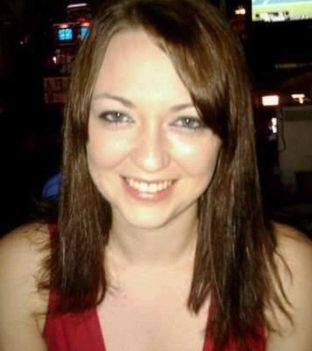 When Charlie’s family began looking for him on August 31, his ex-wife Nicole posted on Facebook, “My beloved husband—rest in peace.” This was disturbing to Charlie’s friends and family. Still, there was nothing to indicate Nicole was involved in his disappearance. Then a call is made from someone claiming to be an investigator into AT&T requesting information about where Charlie and Kala’s last phone calls pinged. Investigators had already spoke to the AT&T employee about this. The employee requested the caller spell the investigator’s name, and the caller misspelled it. The AT&T employee contacted the police, and Nicole Nunez, Charlie’s ex-wife, was arrested for impersonating an officer. Still, investigators said Nicole didn't appear to be implicated in Charlie and Kala’s disappearance—and they were eventually proven correct.
When Charlie’s family began looking for him on August 31, his ex-wife Nicole posted on Facebook, “My beloved husband—rest in peace.” This was disturbing to Charlie’s friends and family. Still, there was nothing to indicate Nicole was involved in his disappearance. Then a call is made from someone claiming to be an investigator into AT&T requesting information about where Charlie and Kala’s last phone calls pinged. Investigators had already spoke to the AT&T employee about this. The employee requested the caller spell the investigator’s name, and the caller misspelled it. The AT&T employee contacted the police, and Nicole Nunez, Charlie’s ex-wife, was arrested for impersonating an officer. Still, investigators said Nicole didn't appear to be implicated in Charlie and Kala’s disappearance—and they were eventually proven correct.
On November 3, 2016, Investigators discover from the phone records that Kala and Charlie’s last phone calls were made from 95 acres of rural land owned by successful Real Estate Agent Todd Kohlhepp. Investigators receive a search warrant for the property, and while investigators search the land, two others confront Todd in his home. At this point, investigators are acting quickly on a lead, without any additional information. Todd reports he is “shocked” and has no idea why they’d be on his property. Investigators on the property find a metal storage container with multiple locks on it. As they are cutting through the locks, they hear a pounding and then screaming inside. Once opened, they discover Kala Brown with chains around her neck, wrists and ankles. Kala explains that she and Charlie responded to an ad for some part-time work cleaning Todd’s property. Shortly after they arrived, Todd shot and killed Charlie and took Kala prisoner. Once the investigators found Charlie’s grave, they discovered Todd had also recently dug a grave for Kala.
Kala had been chained up in a dark storage container for 64 days. “Todd had told me he sold people to sex trade in other countries, but I think he was just trying to scare me on that one," she said. "The story was he walked into a bike shop in Anderson and shot four people and that they never found out who did it. He liked to brag that he was a serial killer and a mass murderer. He said he was going to kill more people because he had dreams of his body count being in three digits. He liked to brag about people he killed. He would get there between 1 and 3 o'clock every day, take me up to the main building, feed me, make me do whatever he wanted sexually, and then he would put me back in the building… He would always come back between 5 and 7 p.m., take me back up to the building, feed me again most of the time -- get whatever out of me he wanted sexually again…. He said he would never see jail time. He would either buy his way out or his handlers would get him out. He said that if he was ever caught that he would say I shot Charlie, that I had seduced him and made him think I wanted to get away from Charlie. He liked to tell me that he would never be in trouble for this, that he would make sure it was my fault somehow…. I got to live… How is that fair? He wouldn't have hurt Charlie if it wasn't for me…. He made that very clear. He only hurt Charlie to get to me. I wasn't going to be his good kitten anymore, as he liked to call me. I wasn't scared anymore. If he shot me it would be easier."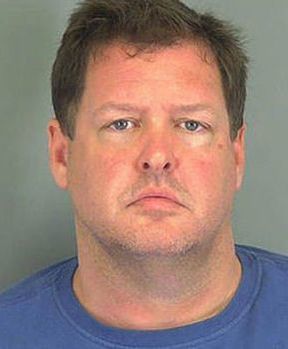 Todd Kohlhepp Then investigators found two more bodies on the property. Johnny (29) and Megan McGraw Coxie (25) had disappeared on December 19, 2015. Todd reported the couple had responded to an offer to clean for him. Todd had killed Johnny and held Megan captive for five days before shooting her also.
Todd Kohlhepp Then investigators found two more bodies on the property. Johnny (29) and Megan McGraw Coxie (25) had disappeared on December 19, 2015. Todd reported the couple had responded to an offer to clean for him. Todd had killed Johnny and held Megan captive for five days before shooting her also.
Once in custody, Todd Kohlhepp began talking about the Superbike Murders in Chesnee, South Carolina, on November 6, 2003, --a notorious unsolved killing of 4 people working in a bike shop. The killings had gone unsolved in for 13 years. An envelope full of cash was lying on the counter untouched, so robbery wasn’t the motive. Todd reported he was angry over a motorcycle he had bought and wasn’t allowed to return. He felt they made fun of his ignorance about riding motorcycle. Todd walked into the back of the building and first shot the mechanic, Chris Sherbert (26). He then walked into the showroom and shot Scott Ponder (30), his mother Beverly Guy (52) and Brian Lucas (30). Investigators knew Todd’s story was accurate when he admitted he fired a shot into each victim’s forehead before he left, which was a fact never made public.
Where did this creep come from?
Todd Christopher Sampsell Kohlhepp was born on March 7, 1971 in Fort Lauderdale, Florida, and was raised in South Carolina and Georgia. His parents divorced when he was 2, and his mother, who got custody of him, married another man the following year. Kohlhepp had an unhealthy relationship with his stepfather and wanted to live with his biological father, whom he had not seen in 8 years.
Kohlhepp was described as a troublesome child. He was known to be aggressive towards other children and would destroy their property. At the age of 9, when he started undergoing counseling, Kohlhepp was described as being "explosive" and "preoccupied with sexual content." He displayed cruelty to animals, shooting a dog with a BB gun and killing a goldfish with Clorox because he wanted a different pet. Kohlhepp spent 3 1/2 months inpatient in a Georgia mental hospital because of his inability to get along with other children.
Eventually, in 1983, Kohlhepp was sent to live with his biological father in Arizona after his mother and stepfather separated. He took up his father's hobby of collecting weapons and was taught by him to "blow things up and make bombs." Their relationship deteriorated due to his father's absence with a number of female partners, and Kohlhepp returned to his mother.
Todd's mother, Regina Tague, remembers a smart boy who liked to read the encyclopedia and sit on her lap while she read the funny papers to him. "And he would laugh and he would get tickled. And he learned." But she acknowledged the divorce was hard on him. Both parents became distracted from parenting by their new partners.
What was Todd like as an adolescent?
On November 2, 1986 a few blocks from Todd Kohlhepp’s home, a college student woke to an adolescent standing in her bedroom. The boy said, “Wrong apartment,” and left. She, years later, identified the intruder as Todd Kohlhepp. She didn’t think too much of it at the time, since he was “only an adolescent.” On November 9, 1986, her 22-year-old roommate woke up to an adolescent standing over her with duct tape which he pressed down over her mouth. He rolled her over and tied her hands. As he raped her, he asked, “Do you like it? Do you like it?” She called the police. The case remains unsolved.
On November 25, 1986 15-year-old Todd Kohlhepp kidnapped a 14-year-old neighbor girl in Tempe. He threatened her with a .22-caliber revolver, brought her back to his home, tied her up, duct taped her mouth shut, and raped her. Afterwards, he walked her home and threatened to kill her younger siblings if she told anyone what happened. She called the police and Todd Kohlhepp was charged with kidnapping, sexual assault, and committing a dangerous crime against children. In 1987, he pled guilty to the kidnapping charge, and the other charges were dropped. Todd was sentenced to 15 years in prison, and registered as a sex offender. According to court records, Kohlhepp was diagnosed with Borderline Personality Disorder and had an IQ of 118, which was considered "above average".
The judge in the case said he was "very bright and should be advanced academically," but "behaviorally and emotionally dangerous" and likely could not be rehabilitated. Kohlhepp's probation officer wrote that Todd "felt the world owed him something." Kohlhepp's attorney stated he did not believe his client “would go on to harm others" in the future.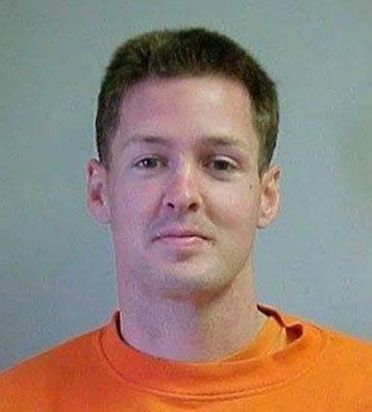
Release
In August 2001, Kohlhepp was released from prison after serving 14 years and moved to South Carolina, where his mother was living. Despite being registered as a sex offender, Kohlhepp was able to get a real estate license on June 30, 2006, after lying about the felony charge on his application. From this, he built a firm that had a dozen agents in its employment. Todd became a top-selling agent in the Carolina region. Kohlhepp also acquired a private pilot license and several properties out of state. In May 2014, he purchased 95 acres of land, located in an area 9 miles from Moore, for $305,632. He then set a fence around the property, which cost $80,000. Neighbors reported hearing hundreds of shots fired at night on his property.
A customer who sold her home to Kohlhepp remembered him as extremely outgoing and professional, but noted that he would often talk about his firearms and sometimes subtly used sexual innuendoes during their conversations. A banker who worked with Todd Kohlhepp said Todd often watched pornographic videos, even at work. Kohlhepp frequented a Waffle House restaurant in Roebuck, where his behavior disturbed the waitresses to the point where the male cook began to take Kohlhepp's orders for them.
Plea
On May 26, 2017, Todd Kohlhepp pled guilty to 7 counts of murder, 2 counts of kidnapping and 1 count of criminal sexual assault and was sentenced to seven consecutive life sentences without the possibility of parole in a plea bargain that spared Kohlhepp from capital punishment. The agreement was reached based on his report that he had no additional victims. In December 2017, Kohlhepp wrote to the Spartanburg Herald-Journal claiming that he had more victims who have not been discovered. It may be the case, but it’s important to keep in mind he is a narcissistic creep and a chronic liar. Todd is serving life without the possibility of parole at Broad River Correctional Institute in Columbia, South Carolina.
Food for thought: When one door slams—open it. It is a door.
Quotes (more Mitch Hedberg)
I like it when they say shampoo is volumizing... because my hair is really quiet.
I saw this wino, he was eating grapes. I told him, "Dude, you have to wait."
I’m sick of “Soup of the Day.” Let’s make a commitment to a “Soup from now on.”
I bought a donut and the man asked me if I needed a receipt. I said, “Man you must have some skeptical friends.” I just can’t imagine a scenario where someone asks, “Do you have the paperwork for that donut? Can you prove this donut is yours?” I don't need a receipt for the donut, man. I'll just give you the money, then you give me the donut. End of transaction. We don't need to bring ink and paper into this.”
Thanks for listening,
Frank



























































 Memorial Day in Pierz. Thank you to my dad, Leo Weber, the Branden Deal family, and everyone who serves our country for the benefit of all of us!
Memorial Day in Pierz. Thank you to my dad, Leo Weber, the Branden Deal family, and everyone who serves our country for the benefit of all of us!  Pierz Park
Pierz Park  Kala Brown, age 30, was employed at a dialysis department and did some part-time cleaning for a real estate agent in Spartanburg, South Carolina. Kala had recently met Charlie Carver and they quickly fell in love with each other. Kala and Charlie disappeared on August 31, 2016. Charlie was recently divorced and his ex-wife was struggling with the separation. Charlie was last seen on video leaving work. He had previously expressed concern that his ex had showed up uninvited in his new apartment.
Kala Brown, age 30, was employed at a dialysis department and did some part-time cleaning for a real estate agent in Spartanburg, South Carolina. Kala had recently met Charlie Carver and they quickly fell in love with each other. Kala and Charlie disappeared on August 31, 2016. Charlie was recently divorced and his ex-wife was struggling with the separation. Charlie was last seen on video leaving work. He had previously expressed concern that his ex had showed up uninvited in his new apartment.  When Charlie’s family began looking for him on August 31, his ex-wife Nicole posted on Facebook, “My beloved husband—rest in peace.” This was disturbing to Charlie’s friends and family. Still, there was nothing to indicate Nicole was involved in his disappearance. Then a call is made from someone claiming to be an investigator into AT&T requesting information about where Charlie and Kala’s last phone calls pinged. Investigators had already spoke to the AT&T employee about this. The employee requested the caller spell the investigator’s name, and the caller misspelled it. The AT&T employee contacted the police, and Nicole Nunez, Charlie’s ex-wife, was arrested for impersonating an officer. Still, investigators said Nicole didn't appear to be implicated in Charlie and Kala’s disappearance—and they were eventually proven correct.
When Charlie’s family began looking for him on August 31, his ex-wife Nicole posted on Facebook, “My beloved husband—rest in peace.” This was disturbing to Charlie’s friends and family. Still, there was nothing to indicate Nicole was involved in his disappearance. Then a call is made from someone claiming to be an investigator into AT&T requesting information about where Charlie and Kala’s last phone calls pinged. Investigators had already spoke to the AT&T employee about this. The employee requested the caller spell the investigator’s name, and the caller misspelled it. The AT&T employee contacted the police, and Nicole Nunez, Charlie’s ex-wife, was arrested for impersonating an officer. Still, investigators said Nicole didn't appear to be implicated in Charlie and Kala’s disappearance—and they were eventually proven correct.On November 3, 2016, Investigators discover from the phone records that Kala and Charlie’s last phone calls were made from 95 acres of rural land owned by successful Real Estate Agent Todd Kohlhepp. Investigators receive a search warrant for the property, and while investigators search the land, two others confront Todd in his home. At this point, investigators are acting quickly on a lead, without any additional information. Todd reports he is “shocked” and has no idea why they’d be on his property. Investigators on the property find a metal storage container with multiple locks on it. As they are cutting through the locks, they hear a pounding and then screaming inside. Once opened, they discover Kala Brown with chains around her neck, wrists and ankles. Kala explains that she and Charlie responded to an ad for some part-time work cleaning Todd’s property. Shortly after they arrived, Todd shot and killed Charlie and took Kala prisoner. Once the investigators found Charlie’s grave, they discovered Todd had also recently dug a grave for Kala.
Kala had been chained up in a dark storage container for 64 days. “Todd had told me he sold people to sex trade in other countries, but I think he was just trying to scare me on that one," she said. "The story was he walked into a bike shop in Anderson and shot four people and that they never found out who did it. He liked to brag that he was a serial killer and a mass murderer. He said he was going to kill more people because he had dreams of his body count being in three digits. He liked to brag about people he killed. He would get there between 1 and 3 o'clock every day, take me up to the main building, feed me, make me do whatever he wanted sexually, and then he would put me back in the building… He would always come back between 5 and 7 p.m., take me back up to the building, feed me again most of the time -- get whatever out of me he wanted sexually again…. He said he would never see jail time. He would either buy his way out or his handlers would get him out. He said that if he was ever caught that he would say I shot Charlie, that I had seduced him and made him think I wanted to get away from Charlie. He liked to tell me that he would never be in trouble for this, that he would make sure it was my fault somehow…. I got to live… How is that fair? He wouldn't have hurt Charlie if it wasn't for me…. He made that very clear. He only hurt Charlie to get to me. I wasn't going to be his good kitten anymore, as he liked to call me. I wasn't scared anymore. If he shot me it would be easier."
 Todd Kohlhepp Then investigators found two more bodies on the property. Johnny (29) and Megan McGraw Coxie (25) had disappeared on December 19, 2015. Todd reported the couple had responded to an offer to clean for him. Todd had killed Johnny and held Megan captive for five days before shooting her also.
Todd Kohlhepp Then investigators found two more bodies on the property. Johnny (29) and Megan McGraw Coxie (25) had disappeared on December 19, 2015. Todd reported the couple had responded to an offer to clean for him. Todd had killed Johnny and held Megan captive for five days before shooting her also.Once in custody, Todd Kohlhepp began talking about the Superbike Murders in Chesnee, South Carolina, on November 6, 2003, --a notorious unsolved killing of 4 people working in a bike shop. The killings had gone unsolved in for 13 years. An envelope full of cash was lying on the counter untouched, so robbery wasn’t the motive. Todd reported he was angry over a motorcycle he had bought and wasn’t allowed to return. He felt they made fun of his ignorance about riding motorcycle. Todd walked into the back of the building and first shot the mechanic, Chris Sherbert (26). He then walked into the showroom and shot Scott Ponder (30), his mother Beverly Guy (52) and Brian Lucas (30). Investigators knew Todd’s story was accurate when he admitted he fired a shot into each victim’s forehead before he left, which was a fact never made public.
Where did this creep come from?
Todd Christopher Sampsell Kohlhepp was born on March 7, 1971 in Fort Lauderdale, Florida, and was raised in South Carolina and Georgia. His parents divorced when he was 2, and his mother, who got custody of him, married another man the following year. Kohlhepp had an unhealthy relationship with his stepfather and wanted to live with his biological father, whom he had not seen in 8 years.
Kohlhepp was described as a troublesome child. He was known to be aggressive towards other children and would destroy their property. At the age of 9, when he started undergoing counseling, Kohlhepp was described as being "explosive" and "preoccupied with sexual content." He displayed cruelty to animals, shooting a dog with a BB gun and killing a goldfish with Clorox because he wanted a different pet. Kohlhepp spent 3 1/2 months inpatient in a Georgia mental hospital because of his inability to get along with other children.
Eventually, in 1983, Kohlhepp was sent to live with his biological father in Arizona after his mother and stepfather separated. He took up his father's hobby of collecting weapons and was taught by him to "blow things up and make bombs." Their relationship deteriorated due to his father's absence with a number of female partners, and Kohlhepp returned to his mother.
Todd's mother, Regina Tague, remembers a smart boy who liked to read the encyclopedia and sit on her lap while she read the funny papers to him. "And he would laugh and he would get tickled. And he learned." But she acknowledged the divorce was hard on him. Both parents became distracted from parenting by their new partners.

What was Todd like as an adolescent?
On November 2, 1986 a few blocks from Todd Kohlhepp’s home, a college student woke to an adolescent standing in her bedroom. The boy said, “Wrong apartment,” and left. She, years later, identified the intruder as Todd Kohlhepp. She didn’t think too much of it at the time, since he was “only an adolescent.” On November 9, 1986, her 22-year-old roommate woke up to an adolescent standing over her with duct tape which he pressed down over her mouth. He rolled her over and tied her hands. As he raped her, he asked, “Do you like it? Do you like it?” She called the police. The case remains unsolved.
On November 25, 1986 15-year-old Todd Kohlhepp kidnapped a 14-year-old neighbor girl in Tempe. He threatened her with a .22-caliber revolver, brought her back to his home, tied her up, duct taped her mouth shut, and raped her. Afterwards, he walked her home and threatened to kill her younger siblings if she told anyone what happened. She called the police and Todd Kohlhepp was charged with kidnapping, sexual assault, and committing a dangerous crime against children. In 1987, he pled guilty to the kidnapping charge, and the other charges were dropped. Todd was sentenced to 15 years in prison, and registered as a sex offender. According to court records, Kohlhepp was diagnosed with Borderline Personality Disorder and had an IQ of 118, which was considered "above average".
The judge in the case said he was "very bright and should be advanced academically," but "behaviorally and emotionally dangerous" and likely could not be rehabilitated. Kohlhepp's probation officer wrote that Todd "felt the world owed him something." Kohlhepp's attorney stated he did not believe his client “would go on to harm others" in the future.

Release
In August 2001, Kohlhepp was released from prison after serving 14 years and moved to South Carolina, where his mother was living. Despite being registered as a sex offender, Kohlhepp was able to get a real estate license on June 30, 2006, after lying about the felony charge on his application. From this, he built a firm that had a dozen agents in its employment. Todd became a top-selling agent in the Carolina region. Kohlhepp also acquired a private pilot license and several properties out of state. In May 2014, he purchased 95 acres of land, located in an area 9 miles from Moore, for $305,632. He then set a fence around the property, which cost $80,000. Neighbors reported hearing hundreds of shots fired at night on his property.
A customer who sold her home to Kohlhepp remembered him as extremely outgoing and professional, but noted that he would often talk about his firearms and sometimes subtly used sexual innuendoes during their conversations. A banker who worked with Todd Kohlhepp said Todd often watched pornographic videos, even at work. Kohlhepp frequented a Waffle House restaurant in Roebuck, where his behavior disturbed the waitresses to the point where the male cook began to take Kohlhepp's orders for them.
Plea
On May 26, 2017, Todd Kohlhepp pled guilty to 7 counts of murder, 2 counts of kidnapping and 1 count of criminal sexual assault and was sentenced to seven consecutive life sentences without the possibility of parole in a plea bargain that spared Kohlhepp from capital punishment. The agreement was reached based on his report that he had no additional victims. In December 2017, Kohlhepp wrote to the Spartanburg Herald-Journal claiming that he had more victims who have not been discovered. It may be the case, but it’s important to keep in mind he is a narcissistic creep and a chronic liar. Todd is serving life without the possibility of parole at Broad River Correctional Institute in Columbia, South Carolina.
Food for thought: When one door slams—open it. It is a door.
Quotes (more Mitch Hedberg)
I like it when they say shampoo is volumizing... because my hair is really quiet.
I saw this wino, he was eating grapes. I told him, "Dude, you have to wait."
I’m sick of “Soup of the Day.” Let’s make a commitment to a “Soup from now on.”
I bought a donut and the man asked me if I needed a receipt. I said, “Man you must have some skeptical friends.” I just can’t imagine a scenario where someone asks, “Do you have the paperwork for that donut? Can you prove this donut is yours?” I don't need a receipt for the donut, man. I'll just give you the money, then you give me the donut. End of transaction. We don't need to bring ink and paper into this.”
Thanks for listening,
Frank




























































Published on May 29, 2018 07:32
May 21, 2018
Monster of the Andes
The School Shooting Lie—no warning signs
This is the 22nd school shooting in the U.S. this year where someone was killed or injured. (Since Columbine, 128 dead.) The shooting is then followed by a spokesman stating (as the Texas Governor did in Sante Fe), “There were no warning signs.” When someone starts wearing Nazi medals, isn’t that a bit of a warning sign? Or when someone posts “Born to Kill” on their Facebook page days earlier. Or when someone who was once a good student is now struggling and he starts wearing a Columbine-style trench coat to school, regardless of the weather. I just listened to an analyst on CNN state, “Not every angry and rebellious teenager is going to be a school shooter.” That is true. He might be a sex offender. (60% of all of the sex offenses committed in the U.S. and in Minnesota are committed by high school dropouts.) Or maybe he’ll kill someone driving high or drunk. We do know that angry and rebellious teenagers are in trouble and need help. So instead of making excuses for not doing anything about it, how about addressing the problem? How many school shootings is enough? Every single victim’s life means something. I’ve presented on this very issue at the state corrections conference, the MN Psychological Association convention and the state social work conference this year. Social Workers, Therapists and Corrections Agents understand, but we need funding to help troubled students and we need programs that are going to be accountable by demonstrating success.
The 1st question people ask will be: How do you measure success? Easy. Run a criminal history check on every student who has dropped out of your school in the last 5 years. 5 years from the time the new intervention is implemented, those numbers better be down or your program is cut. At CORE we’ve developed programs that address learning how to handle frustration, learning responsible sexual behavior, developing a career, and both understanding values and living by them. As long as they keep saying “There were no warnings signs,” we can pretend that it isn’t our problem. The adult offenders we provide services to at CORE consistently say, “If I would have had this intervention when I was 15, I wouldn’t have committed my crime.” I guarantee you that if you talk to teachers in the schools of the shooters, there were warning signs. There was simply no process in place to address them. When these students struggle, counseling is suggested, but the parents typically don’t follow through or the student drops out. How about implementing a mandatory program with staff that will stop at home to make sure issues are honestly being addressed? We certainly have programs that can monitor their internet use. This is a problem with a solution. It’s a matter of implementing it.
I am sending this email to every congressman and senator in Minnesota. I am open to helping develop a solution.
Monster of the Andes (This is the summary of the life of a terrible person. Would we allow 110 children to be killed in the U.S. without doing anything?)
Pedro Alonso López (born October 8, 1948) is a Colombian serial killer, who was sentenced for killing 110 girls across Colombia, Peru, and Ecuador. López became known as the "Monster of the Andes" in 1980, when he led police to 53 graves in Ecuador, the victims all girls around nine to twelve years old. In 1983, he was found guilty of the murder of 110 girls in Ecuador. He further confessed to an additional 240 murders in Peru and Colombia.
An A&E Biography documentary reports that he was released from an Ecuadorian prison on August 31, 1994, then rearrested an hour later as an illegal immigrant and handed over to Colombian authorities, who charged him with a 20-year-old murder. He was declared insane and held in the psychiatric wing of a Bogotá hospital. In 1998, he was declared sane and released on $50 bail, subject to certain conditions. He later absconded. The same documentary says that Interpol released an advisory for his re-arrest by Colombian authorities over a fresh murder in 2002. As of 2018 his whereabouts are unclear.
Currently there is mixed information of his whereabouts; one citation says he is in prison but does not state when and where he is incarcerated. Other articles referenced in the source/citations said his whereabouts are unknown (2018).  Early Life
Early Life
Pedro López's father, Midardo Reyes, was a member of the Colombian Conservative Party during La Violencia, Colombia's civil war. Reyes cheated on his wife with a prostitute named Benilda López De Casteneda, who became pregnant by Reyes. On April 4, 1948, when Benilda was three months pregnant with López, Reyes was killed from a gunshot wound while defending a grocery store from a rebellious mob. Six months later, Pedro was born in Santa Isabel as the seventh of thirteen children.
According to Pedro López, witnessing acts of prostitution while growing up had disturbing effects on his psyche. Lopez sexually abused his younger sister in 1957, when he was eight years old, and his mother kicked him out of the family home. Following this, Pedro Lopez ran off to Bogotá, Colombia's capital city. He was picked up by a man, taken to a deserted house and repeatedly sodomized. At age twelve, he was taken in by an American family and enrolled in a school for orphans. He ran away after two years because he was allegedly molested by a male teacher. Lopez was one of the homeless children known as “gamines.” He joined a gang and smoked basuco, an impure form of cocaine. At 18, he stole cars for a living and sold the cars to local chop shops, which ultimately resulted in his incarceration. Arrest
During his incarceration, he reported that he was brutally gang-raped by at least two men and in retaliation killed his attackers with a makeshift knife. It doesn’t appear that he received any extra time for the murders.
López said that after his jail term, he started murdering young girls in Peru. He claimed that, by 1978, he had killed over 100 of them. Lopez was caught by the Ayachucos, a community in Peru, when he attempted to kidnap a nine year old. His captors submitted him to tribal law which proposed burying him alive. A western missionary convinced tribe members to turn Lopez over to the Peruvian police, who promptly deported him to Colombia without truly considering the crimes inflicted upon natives and the danger he posed to society. He was released and made his way to Ecuador, where scores of girls began to go missing as well. He bragged of killing about three girls a week in Ecuador. López said, "I like the girls in Ecuador, they are more gentle and trusting, more innocent.” Families tried to find the missing girls on their own. In the Ambato region in 1980, vendor Carlina Ramon and a group of her peers caught him in Ecuador when he attempted to lure Ramon’s daughter from a busy market.
Pedro Lopez targeted girls between the ages of 8 and 12 in Colombia, Ecuador, and Peru. I think it’s important to show pictures of victims to appreciate them, far more than the terrible person and the terrible justice system that dealt with him.
 Most of his victims were of indigenous heritage. López’s crimes came to light in the 1980 after a landslide in Ecuador exposed the bodies of some of López’s earlier victims. The discovery prompted an investigation and search for more bodies by authorities. López preyed on the kindness of the young girls by pretending to be a salesman who needed directions.
Most of his victims were of indigenous heritage. López’s crimes came to light in the 1980 after a landslide in Ecuador exposed the bodies of some of López’s earlier victims. The discovery prompted an investigation and search for more bodies by authorities. López preyed on the kindness of the young girls by pretending to be a salesman who needed directions. 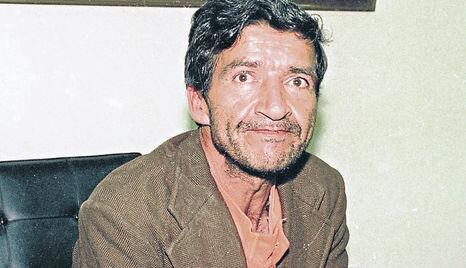 Once Lopez was in police custody, he initially refused to cooperate with authorities until investigator Pastor Cordova Gudino went undercover as a fellow inmate. Gaining Lopez’s trust, Gudino was able to get a confession from Lopez as well as details about sites where the victims were buried. He confessed to over three hundred murders. The police only believed him when a flash flood uncovered a mass grave containing many of his victims. He was arrested in 1980, but was freed by the government in Ecuador at the end of 1994. On July 31, 1981, 33-year-old Lopez pled guilty to the murders of 57 girls and was imprisoned in Ambato, Ecuador. Because of Ecuador’s laws, Lopez only received a maximum sentence of sixteen years, much to the public’s enormous outrage. (Ecuador would later change its maximum prison sentence to 25 years.). In an interview from his prison cell, López described himself as "the man of the century" and said he was being released for "good behavior."
Once Lopez was in police custody, he initially refused to cooperate with authorities until investigator Pastor Cordova Gudino went undercover as a fellow inmate. Gaining Lopez’s trust, Gudino was able to get a confession from Lopez as well as details about sites where the victims were buried. He confessed to over three hundred murders. The police only believed him when a flash flood uncovered a mass grave containing many of his victims. He was arrested in 1980, but was freed by the government in Ecuador at the end of 1994. On July 31, 1981, 33-year-old Lopez pled guilty to the murders of 57 girls and was imprisoned in Ambato, Ecuador. Because of Ecuador’s laws, Lopez only received a maximum sentence of sixteen years, much to the public’s enormous outrage. (Ecuador would later change its maximum prison sentence to 25 years.). In an interview from his prison cell, López described himself as "the man of the century" and said he was being released for "good behavior."
On August 31, 1994, Lopez was released from Garcia Moreno Prison after serving fourteen years, having been released two years early for good behavior. He was summarily deported to Colombia, where authorities there attempted to convict him of a two-decades-old murder. But instead Lopez was declared insane and, in 1995, institutionalized in a psychiatric facility.
In February 1998, he was declared sane and released under $50 bail with additional stipulations. He visited his elderly mother, who said that he asked for his inheritance and then, upon being informed of her poverty, sold her sole bed and chair to people on the street. Lopez then vanished, with concerns having risen about his possible connection to a 2002 murder. His whereabouts are unknown.
 When you read about this travesty of justice, consider that they know Lopez killed 110 children, and South America just let him go. We know 128 children have been killed in the United States in school shootings, and we are still not doing anything about it. We can’t just let it go, and think we handle threats to children better.
When you read about this travesty of justice, consider that they know Lopez killed 110 children, and South America just let him go. We know 128 children have been killed in the United States in school shootings, and we are still not doing anything about it. We can’t just let it go, and think we handle threats to children better.
Time for some good news! My nephew, Scotty Stocco, won the Minced competition hosted by Sprout in Little Falls last week. Minced is advertised as “the finer version of Chopped.” Scotty is entertaining, and a great guy! He’s the Chef at the Iron Range Eatery in Crosby and I encourage you to check his skills out. At Sprout the chefs were required to include three mystery ingredients into the timed appetizer, entree and dessert rounds -- ingredients sourced from Mi Pueblito Market and Restaurant in Long Prairie, as part of the event’s celebration of Latin cuisine. In the end, Scotty came out on top in both the entrée and the final dessert round with his winning dessert combination of dragon fruit custard and purple hominy brittle topped with toasted coconut and pork crackling.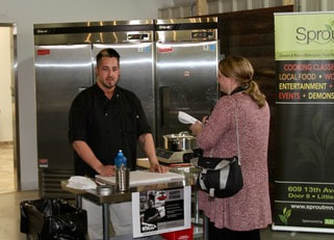
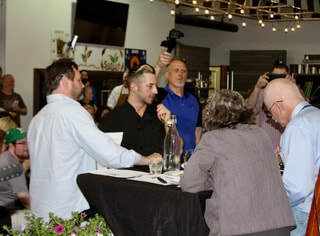

 And in even better news…
And in even better news…
Branden and Nicolette Deal had a baby daughter, Andrea. They are joined at home with their daughter Kaycee now. Thank you God, for another wonderful gift!
 Quotes: (More Mitch Hedberg)
Quotes: (More Mitch Hedberg)
 I read last year that MTV's Real World got 40,000 applications. That's amazing, man... such an even number.
I read last year that MTV's Real World got 40,000 applications. That's amazing, man... such an even number.
If a drink was really ice cold, it would be impossible to drink.
I did a radio interview. The DJs first question was "Who are you?" I had to think, "Is this guy really deep or did I drive to the wrong station?"
You know there's a fishing show on TV? They catch the fish, but then let it go. They apparently don't want to eat the fish, but they do want to make it late for something.
I walked by a dry cleaner at 3am, and the sign said "Sorry we're closed." You don't have to be sorry; it's 3am and you're a dry cleaner. It would be ridiculous for me to expect you to be open. I'm not gonna walk in at 10am and say "Hey, I walked by at 3, you guys were closed. Somebody owes me an apology."
Thanks for listening,
Frank
In the 1960’s some believed that the year 2000 would bring a new understanding of love, light and respect for humanity. As the song says, “Harmony and understanding. Sympathy and Trust Abounding.” If you can get through the first couple minutes of the song I love the ending with horns and amazing bass line.





























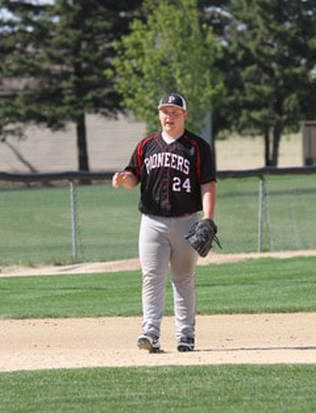

This is the 22nd school shooting in the U.S. this year where someone was killed or injured. (Since Columbine, 128 dead.) The shooting is then followed by a spokesman stating (as the Texas Governor did in Sante Fe), “There were no warning signs.” When someone starts wearing Nazi medals, isn’t that a bit of a warning sign? Or when someone posts “Born to Kill” on their Facebook page days earlier. Or when someone who was once a good student is now struggling and he starts wearing a Columbine-style trench coat to school, regardless of the weather. I just listened to an analyst on CNN state, “Not every angry and rebellious teenager is going to be a school shooter.” That is true. He might be a sex offender. (60% of all of the sex offenses committed in the U.S. and in Minnesota are committed by high school dropouts.) Or maybe he’ll kill someone driving high or drunk. We do know that angry and rebellious teenagers are in trouble and need help. So instead of making excuses for not doing anything about it, how about addressing the problem? How many school shootings is enough? Every single victim’s life means something. I’ve presented on this very issue at the state corrections conference, the MN Psychological Association convention and the state social work conference this year. Social Workers, Therapists and Corrections Agents understand, but we need funding to help troubled students and we need programs that are going to be accountable by demonstrating success.
The 1st question people ask will be: How do you measure success? Easy. Run a criminal history check on every student who has dropped out of your school in the last 5 years. 5 years from the time the new intervention is implemented, those numbers better be down or your program is cut. At CORE we’ve developed programs that address learning how to handle frustration, learning responsible sexual behavior, developing a career, and both understanding values and living by them. As long as they keep saying “There were no warnings signs,” we can pretend that it isn’t our problem. The adult offenders we provide services to at CORE consistently say, “If I would have had this intervention when I was 15, I wouldn’t have committed my crime.” I guarantee you that if you talk to teachers in the schools of the shooters, there were warning signs. There was simply no process in place to address them. When these students struggle, counseling is suggested, but the parents typically don’t follow through or the student drops out. How about implementing a mandatory program with staff that will stop at home to make sure issues are honestly being addressed? We certainly have programs that can monitor their internet use. This is a problem with a solution. It’s a matter of implementing it.
I am sending this email to every congressman and senator in Minnesota. I am open to helping develop a solution.
Monster of the Andes (This is the summary of the life of a terrible person. Would we allow 110 children to be killed in the U.S. without doing anything?)
Pedro Alonso López (born October 8, 1948) is a Colombian serial killer, who was sentenced for killing 110 girls across Colombia, Peru, and Ecuador. López became known as the "Monster of the Andes" in 1980, when he led police to 53 graves in Ecuador, the victims all girls around nine to twelve years old. In 1983, he was found guilty of the murder of 110 girls in Ecuador. He further confessed to an additional 240 murders in Peru and Colombia.
An A&E Biography documentary reports that he was released from an Ecuadorian prison on August 31, 1994, then rearrested an hour later as an illegal immigrant and handed over to Colombian authorities, who charged him with a 20-year-old murder. He was declared insane and held in the psychiatric wing of a Bogotá hospital. In 1998, he was declared sane and released on $50 bail, subject to certain conditions. He later absconded. The same documentary says that Interpol released an advisory for his re-arrest by Colombian authorities over a fresh murder in 2002. As of 2018 his whereabouts are unclear.
Currently there is mixed information of his whereabouts; one citation says he is in prison but does not state when and where he is incarcerated. Other articles referenced in the source/citations said his whereabouts are unknown (2018).
 Early Life
Early Life
Pedro López's father, Midardo Reyes, was a member of the Colombian Conservative Party during La Violencia, Colombia's civil war. Reyes cheated on his wife with a prostitute named Benilda López De Casteneda, who became pregnant by Reyes. On April 4, 1948, when Benilda was three months pregnant with López, Reyes was killed from a gunshot wound while defending a grocery store from a rebellious mob. Six months later, Pedro was born in Santa Isabel as the seventh of thirteen children.
According to Pedro López, witnessing acts of prostitution while growing up had disturbing effects on his psyche. Lopez sexually abused his younger sister in 1957, when he was eight years old, and his mother kicked him out of the family home. Following this, Pedro Lopez ran off to Bogotá, Colombia's capital city. He was picked up by a man, taken to a deserted house and repeatedly sodomized. At age twelve, he was taken in by an American family and enrolled in a school for orphans. He ran away after two years because he was allegedly molested by a male teacher. Lopez was one of the homeless children known as “gamines.” He joined a gang and smoked basuco, an impure form of cocaine. At 18, he stole cars for a living and sold the cars to local chop shops, which ultimately resulted in his incarceration. Arrest
During his incarceration, he reported that he was brutally gang-raped by at least two men and in retaliation killed his attackers with a makeshift knife. It doesn’t appear that he received any extra time for the murders.
López said that after his jail term, he started murdering young girls in Peru. He claimed that, by 1978, he had killed over 100 of them. Lopez was caught by the Ayachucos, a community in Peru, when he attempted to kidnap a nine year old. His captors submitted him to tribal law which proposed burying him alive. A western missionary convinced tribe members to turn Lopez over to the Peruvian police, who promptly deported him to Colombia without truly considering the crimes inflicted upon natives and the danger he posed to society. He was released and made his way to Ecuador, where scores of girls began to go missing as well. He bragged of killing about three girls a week in Ecuador. López said, "I like the girls in Ecuador, they are more gentle and trusting, more innocent.” Families tried to find the missing girls on their own. In the Ambato region in 1980, vendor Carlina Ramon and a group of her peers caught him in Ecuador when he attempted to lure Ramon’s daughter from a busy market.
Pedro Lopez targeted girls between the ages of 8 and 12 in Colombia, Ecuador, and Peru. I think it’s important to show pictures of victims to appreciate them, far more than the terrible person and the terrible justice system that dealt with him.
 Most of his victims were of indigenous heritage. López’s crimes came to light in the 1980 after a landslide in Ecuador exposed the bodies of some of López’s earlier victims. The discovery prompted an investigation and search for more bodies by authorities. López preyed on the kindness of the young girls by pretending to be a salesman who needed directions.
Most of his victims were of indigenous heritage. López’s crimes came to light in the 1980 after a landslide in Ecuador exposed the bodies of some of López’s earlier victims. The discovery prompted an investigation and search for more bodies by authorities. López preyed on the kindness of the young girls by pretending to be a salesman who needed directions.  Once Lopez was in police custody, he initially refused to cooperate with authorities until investigator Pastor Cordova Gudino went undercover as a fellow inmate. Gaining Lopez’s trust, Gudino was able to get a confession from Lopez as well as details about sites where the victims were buried. He confessed to over three hundred murders. The police only believed him when a flash flood uncovered a mass grave containing many of his victims. He was arrested in 1980, but was freed by the government in Ecuador at the end of 1994. On July 31, 1981, 33-year-old Lopez pled guilty to the murders of 57 girls and was imprisoned in Ambato, Ecuador. Because of Ecuador’s laws, Lopez only received a maximum sentence of sixteen years, much to the public’s enormous outrage. (Ecuador would later change its maximum prison sentence to 25 years.). In an interview from his prison cell, López described himself as "the man of the century" and said he was being released for "good behavior."
Once Lopez was in police custody, he initially refused to cooperate with authorities until investigator Pastor Cordova Gudino went undercover as a fellow inmate. Gaining Lopez’s trust, Gudino was able to get a confession from Lopez as well as details about sites where the victims were buried. He confessed to over three hundred murders. The police only believed him when a flash flood uncovered a mass grave containing many of his victims. He was arrested in 1980, but was freed by the government in Ecuador at the end of 1994. On July 31, 1981, 33-year-old Lopez pled guilty to the murders of 57 girls and was imprisoned in Ambato, Ecuador. Because of Ecuador’s laws, Lopez only received a maximum sentence of sixteen years, much to the public’s enormous outrage. (Ecuador would later change its maximum prison sentence to 25 years.). In an interview from his prison cell, López described himself as "the man of the century" and said he was being released for "good behavior."On August 31, 1994, Lopez was released from Garcia Moreno Prison after serving fourteen years, having been released two years early for good behavior. He was summarily deported to Colombia, where authorities there attempted to convict him of a two-decades-old murder. But instead Lopez was declared insane and, in 1995, institutionalized in a psychiatric facility.
In February 1998, he was declared sane and released under $50 bail with additional stipulations. He visited his elderly mother, who said that he asked for his inheritance and then, upon being informed of her poverty, sold her sole bed and chair to people on the street. Lopez then vanished, with concerns having risen about his possible connection to a 2002 murder. His whereabouts are unknown.
 When you read about this travesty of justice, consider that they know Lopez killed 110 children, and South America just let him go. We know 128 children have been killed in the United States in school shootings, and we are still not doing anything about it. We can’t just let it go, and think we handle threats to children better.
When you read about this travesty of justice, consider that they know Lopez killed 110 children, and South America just let him go. We know 128 children have been killed in the United States in school shootings, and we are still not doing anything about it. We can’t just let it go, and think we handle threats to children better. Time for some good news! My nephew, Scotty Stocco, won the Minced competition hosted by Sprout in Little Falls last week. Minced is advertised as “the finer version of Chopped.” Scotty is entertaining, and a great guy! He’s the Chef at the Iron Range Eatery in Crosby and I encourage you to check his skills out. At Sprout the chefs were required to include three mystery ingredients into the timed appetizer, entree and dessert rounds -- ingredients sourced from Mi Pueblito Market and Restaurant in Long Prairie, as part of the event’s celebration of Latin cuisine. In the end, Scotty came out on top in both the entrée and the final dessert round with his winning dessert combination of dragon fruit custard and purple hominy brittle topped with toasted coconut and pork crackling.



 And in even better news…
And in even better news…Branden and Nicolette Deal had a baby daughter, Andrea. They are joined at home with their daughter Kaycee now. Thank you God, for another wonderful gift!

 Quotes: (More Mitch Hedberg)
Quotes: (More Mitch Hedberg) I read last year that MTV's Real World got 40,000 applications. That's amazing, man... such an even number.
I read last year that MTV's Real World got 40,000 applications. That's amazing, man... such an even number.If a drink was really ice cold, it would be impossible to drink.
I did a radio interview. The DJs first question was "Who are you?" I had to think, "Is this guy really deep or did I drive to the wrong station?"
You know there's a fishing show on TV? They catch the fish, but then let it go. They apparently don't want to eat the fish, but they do want to make it late for something.
I walked by a dry cleaner at 3am, and the sign said "Sorry we're closed." You don't have to be sorry; it's 3am and you're a dry cleaner. It would be ridiculous for me to expect you to be open. I'm not gonna walk in at 10am and say "Hey, I walked by at 3, you guys were closed. Somebody owes me an apology."
Thanks for listening,
Frank
In the 1960’s some believed that the year 2000 would bring a new understanding of love, light and respect for humanity. As the song says, “Harmony and understanding. Sympathy and Trust Abounding.” If you can get through the first couple minutes of the song I love the ending with horns and amazing bass line.
































Published on May 21, 2018 16:17
May 15, 2018
Before Me Too, There Was He Won.
 Frank with his mother, Rosetta, at the Midwest Independent Publishers Association Gala Book Awards.
Frank with his mother, Rosetta, at the Midwest Independent Publishers Association Gala Book Awards.  Preston and Olivia at the Midwest Independent Publishers Association Gala Book Awards. I was blessed for Murder Book to be nominated as a finalist for Best Mystery, Best Young Adult Novel and Best Romance of 2018 at the Midwest Book Awards for a 12 state area in the Midwest. Why didn’t I win? I defer to Occam’s Razor: The simplest explanation is often the best. It wasn’t as good as the other books. For example, Rebecca Davis won Best Young Adult Novel and she is an outstanding author as well as a very classy person.
Preston and Olivia at the Midwest Independent Publishers Association Gala Book Awards. I was blessed for Murder Book to be nominated as a finalist for Best Mystery, Best Young Adult Novel and Best Romance of 2018 at the Midwest Book Awards for a 12 state area in the Midwest. Why didn’t I win? I defer to Occam’s Razor: The simplest explanation is often the best. It wasn’t as good as the other books. For example, Rebecca Davis won Best Young Adult Novel and she is an outstanding author as well as a very classy person. Still, the obsessive investigator in me had to look over the judges' scoring sheets. This is when I developed a better understanding of how subjective scoring can be. There were some wonderful comments, including 1 judge who wrote if I wrote 18 books he would buy and read every one. Each book is evaluated by 3 judges.
Judge 1 gave me a perfect score of 25, stating, “Strong easy dialog that suited each person. Well crafted. Excellent read. Fun story-telling style. I like the clues without a give-away.”
Judge 2 gave me a score of 24.5 with an arrow pointing up, “I delighted in the little factoids. Well-developed characters. The plot is engaging and original.”
Judge 3 gave me a 19, which took me out of the running. Criticism was, “I don’t believe they would have released the killer from jail in the last section.”
Here’s my frustration with the criticism from judge 3. It did happen in a case I worked, where the judge set the stage for releasing a murderer from prison, based on the suspected perjury by his son, just as it is in the book. I was warned by an editor (a month before the awards) who was now working closely with an investigator in Cleveland. She commented that she is learning that what actually happens with some of these cases is more unbelievable than fiction, and someone will eventually judge me poorly, even when I’m reporting the truth, because real life cases can be unbelievable.
Murder Book has created a following from amazing people and I am so grateful. People stop and talk to me about it every week, all over the state. The sequel, The I-94 Murders, is at North Star Press ready to roll. I’ll let the readers be the judge! Before Me Too, There Was He Won.
In 1992, New York socialite Joy Silverman was relentlessly terrorized by a man she did not know. She received creepy hang-up calls at all hours, lewd cards and letters. When the man sets his sights on her teenage daughter – sending the teen a sexually lewd message and threatening to kidnap her – Silverman finally called the FBI. Who was her sadistic stalker? And how far did it go?
Joy Silverman was born Joy Fererh to a Jewish family of modest means on April 8, 1947. She worked as a trusted secretary for elite firms, following her mother’s footsteps. Her mother married well, and Solomon Wachtler was the attorney the family hired to protect Joy Silverman's $2.4 million inheritance she received from her stepfather. In 1988, Joy worked for the New York presidential campaign of then-Vice President George H. W. Bush, raising over $600,000 and becoming one of his top fundraisers. After Bush's victory, Joy was recommended for an ambassadorship and she was nominated as United States Ambassador to Barbados. Senator Paul Sarbanes shut down the nomination stating she is "a candidate with no ostensible qualifications for ambassadorship other than her campaign contributions." Solomon Wachtler tried to intervene on her behalf but the nomination eventually expired in the U.S. Senate never coming to a vote. President Bush then appointed her as a trustee of the John F. Kennedy Center for the Performing Arts.
Solomon "Sol" Wachtler (born April 29, 1930) is an American lawyer and Republican politician from New York. He was Chief Judge of the New York Court of Appeals from 1985 to 1992. Wachtler's most famous quote, made shortly after his appointment as Chief Judge, was that district attorneys could get grand juries to "indict a ham sandwich." This quote was then used by Tom Wolfe in Wolfe's 1987 novel The Bonfire of the Vanities, paraphrased into "a grand jury would 'indict a ham sandwich,' if that's what you wanted." Wachtler was also known for the remark, "A marriage license should not be viewed as a license for a husband to forcibly rape his wife with impunity" (in People v. Liberta). Wachtler was elected to the New York State Supreme Court in 1968, and to the New York Court of Appeals in 1972, and was appointed Chief Judge of the Court of Appeals in January 1985.
In 1988, Sol Wachtler began an affair with Republican fundraiser Joy Silverman. At the time, Wachtler was a co-executor of the estate of Alvin Wolosoff, Silverman's stepfather and the uncle of Wachtler's wife. He was also trustee of four trusts worth $24 million stemming from Wolosoff's estate for the benefit of Silverman and her family. Joy Silverman ended her affair with Sol Wachtler in 1991 after Sol indicated he had no plans of leaving his wife.
Joy Silverman began receiving calls day and night, lewd letters and cards. When a card arrived to her 13-year-old daughter, containing a condom, and a threat to kidnap her, Joy involved the FBI. Joy’s harasser wanted $20,000 to stop. They arranged a meeting. The harasser didn’t pick up the money, but instead left a note stating it would take $200,000. The FBI followed the man, and arrested the highest seated judge in the New York Court of Appeals, Sol Wachtler. In November of 1992 Sol was arrested on charges of extortion, racketeering, and blackmail.
 Joy Silverman Wachtler was sentenced to 15 months after pleading guilty to harassing Silverman and threatening to kidnap her daughter. He served his sentence, first at the medium-security Federal Correctional Institution in Butner, North Carolina, and from December 1993 at the Federal Medical Center in Rochester, Minnesota after he was stabbed in the shoulder while dozing in his cell in November. Wachtler was sentenced to 15 months, but received time off for good behavior. His sentence started September 28, 1993. He was released after serving 13 months.
Joy Silverman Wachtler was sentenced to 15 months after pleading guilty to harassing Silverman and threatening to kidnap her daughter. He served his sentence, first at the medium-security Federal Correctional Institution in Butner, North Carolina, and from December 1993 at the Federal Medical Center in Rochester, Minnesota after he was stabbed in the shoulder while dozing in his cell in November. Wachtler was sentenced to 15 months, but received time off for good behavior. His sentence started September 28, 1993. He was released after serving 13 months.
After his release from prison, Wachtler wrote a prison memoir, After the Madness, and has written as a critic-at-large for The New Yorker Magazine. He is currently an Adjunct Professor at Touro Law School and Chair of the Law and Psychiatry Institute of North Shore Long Island Jewish Hospital. Wachtler's New York law license was restored by the New York Supreme Court, Appellate Division on October 2, 2007. Sol maintained his marriage. Wachtler lives in Manhasset, New York. His son, Phillip Wachtler, is married to Robin Wilpon, daughter of New York Mets owner Fred Wilpon.
Joy and her millionaire husband, Jeff Silverman, divorced in 1995, after Joy’s affair with Sol Wachtler. Jeff Silverman remarried but later committed suicide. Joy Silverman was fired as a fundraiser for the Republican party. It doesn’t seem like a fair ending for a woman who was harassed and for the man who harassed her. I have to believe this would end differently today. Like I suggested, before the “Me Too” movement, it was “He Won.”
Quotes: (more from Mitch Hedberg)
I saw a band in LA and the band was having an off night and some people starting throwing tomatoes at the band. I thought "Who would throw a tomato at a band?" That’s bad. But then I considered, "Who would bring a tomato to a show?" That's even worse.
I play golf. I'm not good at golf, I never got good. I never got a hole-in-one. But I did hit a guy. And that's way more satisfying. You're supposed to yell "Fore!" but I was too busying mumbling, "There ain't no way that's gonna hit him."
When you're in Hollywood and you're a comedian, everybody wants you to do other things besides comedy. They say "All right you're a stand up comedian, can you act? Can you write? Write us a script." They want me to do things that's related to comedy, but it's not comedy. That's not fair. It's as though if I was a cook, they’d say "All right you're a cook... but can you farm?"
I saw a lady on TV, she was born without arms. Literally. She was born with her hands attached to her shoulders. And that was sad. But then they said "Lola does not know the meaning of the word "can't." And that to me was actually kind of worse, in a way. Not only does she not have arms, but she doesn't understand simple contractions.
Thanks for listening,
Frank #wsite-video-container-301957219625622463{ background: url(//www.weebly.comhttp://frankweberauthor... } #video-iframe-301957219625622463{ background: url(//cdn2.editmysite.com/images/util/video... } #wsite-video-container-301957219625622463, #video-iframe-301957219625622463{ background-repeat: no-repeat; background-position:center; } @media only screen and (-webkit-min-device-pixel-ratio: 2), only screen and ( min-device-pixel-ratio: 2), only screen and ( min-resolution: 192dpi), only screen and ( min-resolution: 2dppx) { #video-iframe-301957219625622463{ background: url(//cdn2.editmysite.com/images/util/video... background-repeat: no-repeat; background-position:center; background-size: 70px 70px; } } Kaycee offering to give her new sister, Andrea Ethel Deal, a shot if necessary. Andrea was born to Branden and Nicolette Deal.

 Under the picture of Kaycee with the camera caption: Kaycee sees her Grandpa Frank taking pictures all the time. She started walking through the house taking pictures of everything, including paging through her books and taking pictures. (Spy training)
Under the picture of Kaycee with the camera caption: Kaycee sees her Grandpa Frank taking pictures all the time. She started walking through the house taking pictures of everything, including paging through her books and taking pictures. (Spy training)  Marge, Kristin, and Michael Weber
Marge, Kristin, and Michael Weber 


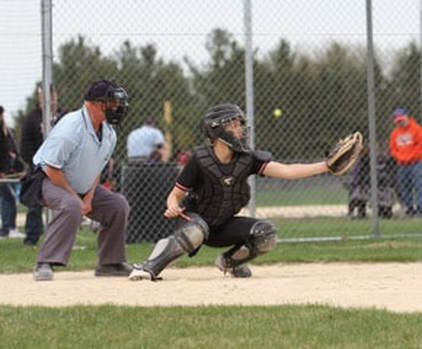




















Published on May 15, 2018 07:30



